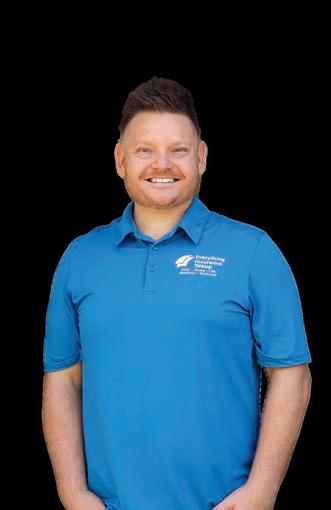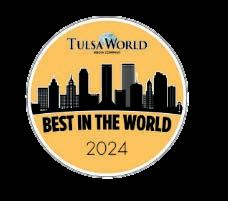












































Hey friends, and welcome to February! We hope your January and the new year were good for all of you and your family. Our January was a little crazy with B the Light Mission, which I will talk about later in the Upfront.
Each February since 2019, we have celebrated Black History Month. In this year’s feature story our historian writer, Debbie Neece, knocked this story out of the park. If you remember a few years ago, we wrote about the Tulsa Massacre’s 100th anniversary. That cover is still one of my favorites to date. We flipped it this year and wrote about Black Wall Street before the massacre and how it flourished as a city within a city. The highlight is how one man bought 40 acres of land in north Tulsa and started one of the best black cities in all of the US. It had everything at its peak. It had churches, grocery stores, theaters, businesses, and hotels. It even had its own bus system. What an amazing vision and in one day it was all gone. We are proud to do this issue each year. As you might know, growing up in Arkansas my best friend was black. I don’t ever look at color, never have and never will. This issue’s Profile is on Mr. Brandon Thompson, who not only is a good friend, but he has a successful barber shop. Reach out to him and his staff for a haircut!
Over the last 5 years we have had warming shelters. We started with Rando and Shiloh with Get Real Ministries. Over 2 and ½ years, we had 7 shelters with them. Two years ago we could tell how it was weighing on them with all the other things they do for the homeless. So we took it on ourselves to start looking for our own building - a shelter that could house people in the coldest and most dangerous temperatures. This is how God works and how he places something in your heart. We were shown our current location that used to be the administration building for first Jane Phillps Medical Center then Ascension. This building was built by the government in 1960. The hospital was trying to sell it for a couple of years. We walked into the gym, where today we have our warming shelter, and it all clicked for us.
We were not even B the Light yet. We were just a couple who have seen addiction, loss, and despair first-hand. We looked at each other and said, “Yes, we will take it.” The hospital
representative said she couldn’t let us lease it unless we were a non-profit. We weren’t a non-profit, so we went to work, hired a lawyer, and submitted our application. The first miracle was it usually takes 4 to 6 months to get 501(c)(3) non-profit status, and we got ours in 30 days. God put on my heart to be a light for those who have no light in their lives. That’s how B the Light Mission came to be, and only by God could all that take place in less than 35 days. We opened our first shelter 10 days after we got that small part of the building. A week later the same representative came to us and said Ascension wanted to donate the whole building to B the Light. That’s a small clip of how B the Light started.
Now our plans are so much biggerhousing men and women in the building 24/7 with a plan to get them resources, jobs, and a purpose in life. We have visited many homeless shelters in three states over the last 2 years and selected key ideas we believe will serve our friends in need the best. The month of January was a very trying time for us. We opened up B the Light shelter Sunday, January 5th with 9 guests, who stayed the night. Over the 6 nights we were open, we had 17 guests stay with us as brutal temperatures and snow did not let up. Of those 17 guests, we got 3 people off the streets of Bartlesville. Six days later, we were hit with another brutal cold snap. We opened again on Saturday the 18th through Saturday the 22nd. We had 9 the first night, 13 the second night, 31 the 3rd night, and 23 the last night including 2 children. This last shelter, we helped 4 people get off the streets of Bartlesville. That is what this is all about. Finding and fighting for them with the resources we have worked so hard to have for them.
We could not do these warming shelters without all the volunteers who give so much of their time and energy. We provided food, water, haircuts, showers, clothes and shoes. THANK YOU to all the volunteers! We are blessed to have you in our lives. When we need you, you always answer the call and the need. So with winter still in front of us, we will be here ready to open to help save lives, change lives, and bring light into their lives. That’s what we do and will always do at B the Light! God Bless, Keith and Christy
Volume XVI Issue II Bartlesville Monthly Magazine is published by ENGEL PUBLISHING
New office located in the B the Light Mission 219 North Virginia Avenue, Bartlesville, Oklahoma 74003 www.bartlesvillemonthly.com facebook.com/bartlesvillemonthly
Publisher Brian Engel brian@bartlesvillemonthly.com
Graphics
Engel Publishing matt@engelpublishing.com
Director of Sales & Marketing Keith McPhail keith@bartlesvillemonthly.com
Community Liaison
Christy McPhail christy@bartlesvillemonthly.com
Project Manager Andrea Whitchurch andrea@bartlesvillemonthly.com
Administration
Shelley Greene Stewart
Delivery and Distribution Dewayne Engel Calendar/Social Media calendar@bartlesvillemonthly.com
Contributing Writers
Debbie Neece, Kay Little, Kelly Hurd Jay Hastings, Maria gus Brent Taylor, Keith McPhail, Jay Webster Abigail SIngrey, Mike Tupa, Lori Just Miriam Walker, Joe Todd
Contributing
Photographers
Bartlesville Area History Museum
Mark Blumer Photography
Kristi Bray Photography
Becky Burch Slack, Reese Ryal
Kids Calendar
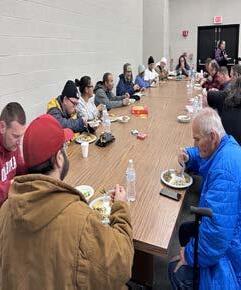

Jessica Smith All Rights
Remembering Black Wall Street before the Greenwood Massacre.
Creative concept by Keith and Christy McPhail
Design by Engel Publishing
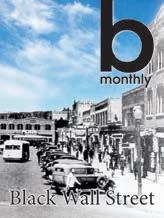
We live, work, and play in Bartlesville, and we’re proud to serve our neighbors with integrity

Experienced, Honest, Local
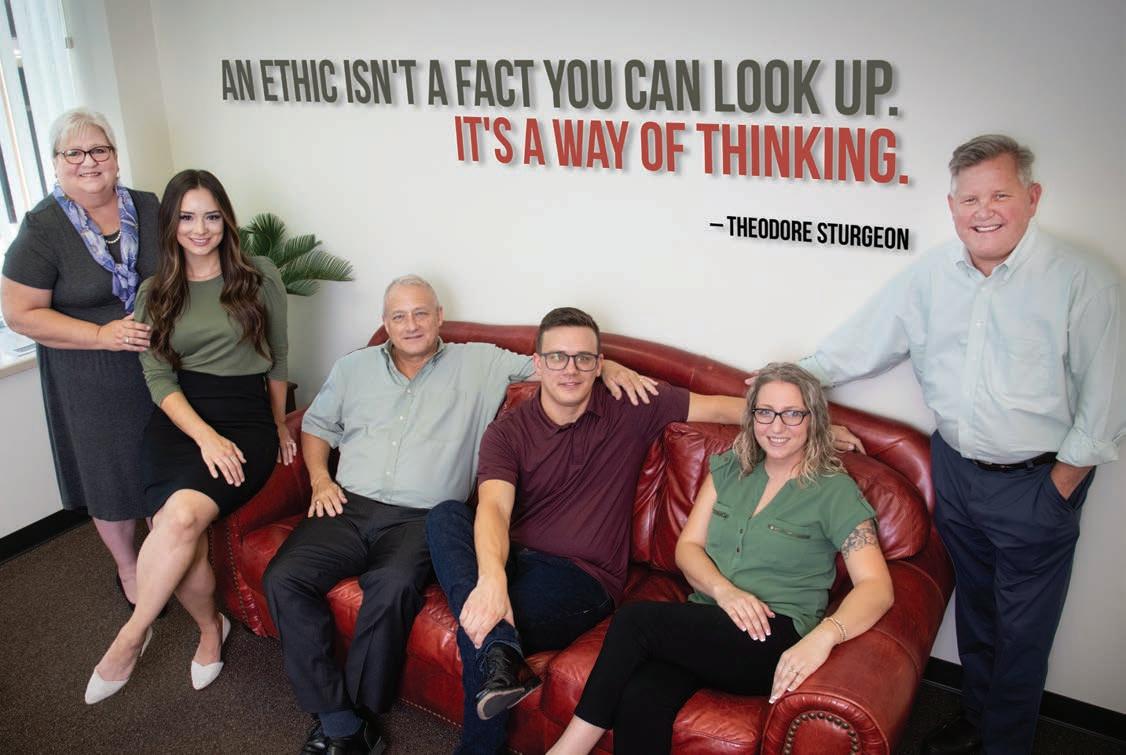

by Lori Just
Brandon Thompson’s journey from a young entrepreneur to the owner of multiple award-winning businesses is a story of hard work, community spirit and a drive to succeed. Born and raised in Bartlesville, Brandon grew up on the west side of town, where he spent much of his time at the Boys and Girls Club before diving into sports, first football and then wrestling. After graduating from Bartlesville High School, he attended some college and worked a variety of odd jobs, including running a snow cone business that he’d take to Sunfest and private events.
“I saw a truck listing on Craiglist, and I drove down to Kingfisher to meet with the owner,” he said. “Before I went, I talked to my friend, Jeremy Campbell, who shared with me about the opportunities of running your own business.

While Brandon wasn’t sure whether B’s Jolly Trolley was something he wanted to pursue long-term, he decided to give it a try savoring his favorite Tiger’s Blood snow cone as he did. It was through this experience that Brandon further developed his entrepreneurial spirit.
His career in cutting hair started when his cousin in Tulsa called about the possibility of attending barber school together. Brandon applied, was accepted, and enrolled, but his cousin never followed through—a decision Brandon still playfully teases him about today.
In 2012, Brandon opened Pure Image Barbershop in Bartlesville. Before graduating, Brandon took the initiative to rent his first space, so he’d be ready to take on clients right away. After completing his training, he confided in his teacher, whom he considered a mentor, expressing his doubts about whether he could truly succeed in the business.
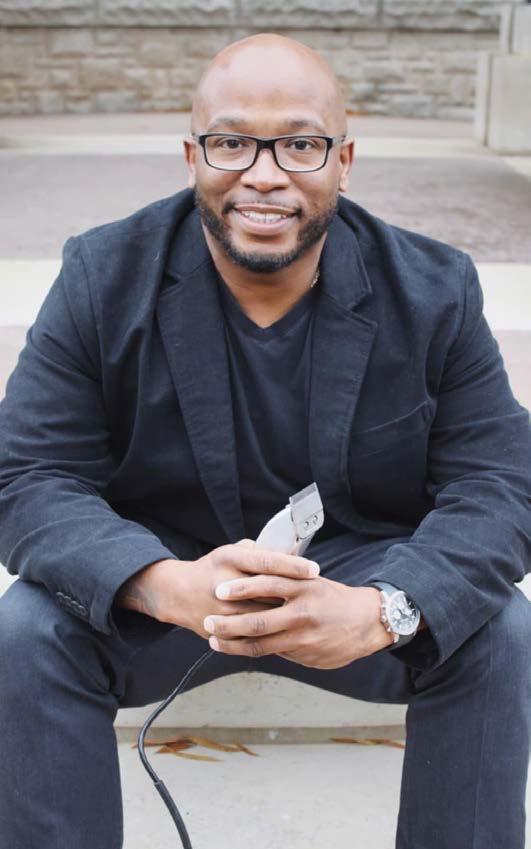
on creating an environment where everyone felt welcome. His shop became a place where families could trust him with their children’s haircuts, and adults could relax while getting a clean, professional look. He credits his success to treating everyone with respect, regardless of background or race.

“I knew building up clientele would be hard, and I needed to get my name out there,” he said. “So, I started a lawn mowing and landscaping business on the side so I could pay the bills until I got established. I started off cutting just three heads a day. Now, I’m cutting 100 heads a week.”
What started as a rented space soon blossomed into a thriving business, with Brandon setting a goal to build his clientele and grow his commitment to the community. Brandon not only worked hard to build a reputation as a talented barber but also focused

“Diverse people sit in my chair, and that’s what I enjoy,” he added. “I didn’t want to just cater to one type of hair. I want to serve everyone in Bartlesville. It starts with greeting everyone when they walk in and make them feel welcome. Haircut is my calling, and every 20 minutes there’s someone else in my chair. I get to meet kids growing up to going away to college and young men to getting older. You form a relationship behind the chair with a lot of the people in the community. There’s no judgement. Everyone is equal whether this is your last $20 to get a haircut or not. We listen to a lot of people’s problems. We help people. Sometimes we can connect people who have lost their job or someone looking to hire. If you form a great connection with the community, you can lead people in the right connection if they want to take it.”
Over the years, Brandon’s business expanded from one location to two, with a new shop opening in Collinsville in 2023. Besides a welcoming environment, his shops include services such as basic trims to more elaborate cuts and fades, straight
razor shaves, hot towel treatments, beard trims and brow arches. Despite the success, he maintains a humble attitude, focusing on uplifting the other barbers in his shop offering guidance to those looking to follow in his footsteps.
“It’s a family here,” said Brandon. “We’re not employees, we’re a team, and we work together to make this place thrive.”
But Brandon’s impact goes beyond his barbershop. He is also known in the community as a DJ, putting on events and hosting gatherings. His love for music and bringing people together started in his youth, where he would throw backyard parties.

“As a kid my mom let me host parties in our big backyard,” he recalled. “We couldn’t afford a live DJ, so I would rent equipment from Dane Warner to DJ myself. I’d go to United and pick up two liters of pop. My mom would charge $5 to get in, and people would just hang out and dance. Word would get around Central and it continued to grow until we’d have like 100 people.”
As an older teen, he would DJ at bigger places like the Lions Club, Elks Club, Westside Community Center. Eventually, he started organizing BBQ cook-offs in Downtown Dewey and hosting comedy shows at the Hilton.
“Growing up, we weren’t rich, and I was raised by a single mom,” he added. “I always wanted to get nice things, so I knew if I could sell something people liked I’d always have money in my pocket.”
Brandon says he’s always looking for ways to contribute and create enjoyable experiences for the people around him. Brandon’s connection to the community is personal, too. Having grown up in Bartlesville, he feels a deep sense of loyalty to the town and its people.
“People know me here. I’ve always been a part of this town, and I want to see it continue to thrive,” he explained. “Even though I could have moved elsewhere, I’ve stayed here because it feels like home.”

Brandon’s business philosophy also extends to his approach to helping others. He mentors the youth who come into his barbershop, offering life advice, and teaching them that success doesn’t have to come through traditional paths like college.
“You don’t have to go to school to be successful,” he advises. “You don’t need to be in debt to be great. Go out, work hard and learn skills that people need like at a tech school.


children having their hair cut at his shop. Together, they’re raising a blended family of five kids and preparing for the arrival of their first grandchild next month.
Reflecting on his success, Brandon says it’s been about staying true to his roots and pushing through challenges.
“The first five years were tough, but I never gave up,” he shared. “Now, I see my employees blossoming and my business thriving, and that’s something I’m really proud of. Bartlesville is real supportive. If you give it a 100 percent and put your passion into it, people will catch on.”
Brandon enjoys a variety of activities, from attending car shows and playing dominoes and cards to relaxing with family and friends, often playing gin rummy or cornhole on the back patio. He’s always had a passion for cars, starting with an ’89 IROC that he sold to a classmate in high school. He also had a ’63 Impala, a few corvettes and a ’90 RS Camaro Rally Sport, which he took great pride in maintaining.
My senior year I made some decisions that lead me to trouble. It shaped me into the person I am today. I learned that you can’t take the short cut in life to get ahead.”
Brandon’s personal life is just as full as his professional one. He married his wife, Christy, in 2019 after a two-year courtship and shared connection through her
“I worked hard to make my cars look good,” he said, recalling how he would clean his cars every Thursday in preparation for the Friday night football game and weekend.
He has a goal to build a custom shop one day, and he envisions owning a collection of classic cars, like a ‘69 Camaro or a ‘69 Chevelle and continuing to nurture his passion for both cars and the hard work it takes to make them shine.
As for the future, Brandon isn’t slowing down anytime soon. While he enjoys his calling as a barber and business owner, he’s also passionate about giving back to the community. He frequently volunteers at local events and does charity work, such as providing haircuts to those in need.
“I want to be a blessing to others,” he said. “That’s what it’s all about. We’re all in this together.”






by Debbie Neece

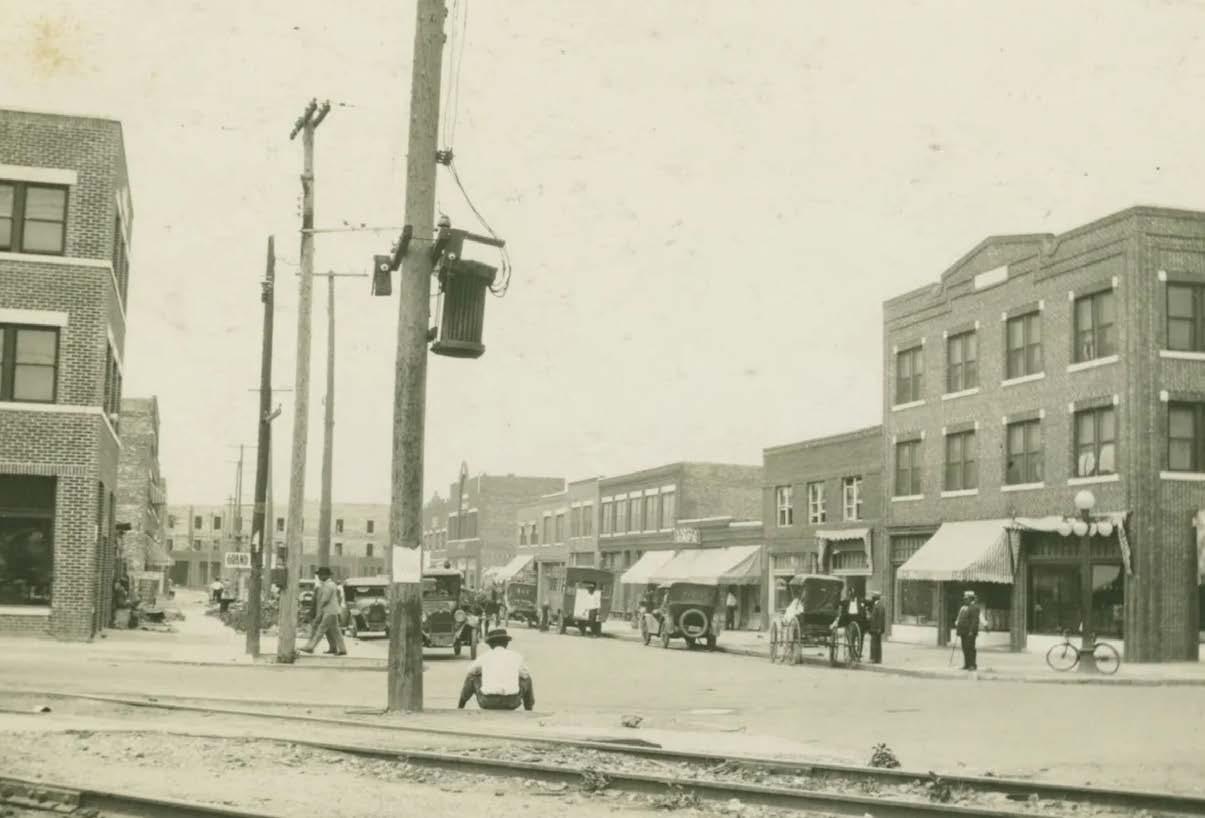
In the February 2021 Bartlesville Monthly Magazine, our friend Natasha Mitchell addressed the 100th Anniversary of the Tulsa Race Massacre. She spoke to us about African American scholar Dr. Carter Woodson who initiated Black History Month and the resilience of Tulsa’s historic Greenwood District residents after one of the worst race massacres in American history… devastating “Black Wall Street” and halting African American generational wealth in its tracks.
The residents of Greenwood were trailblazers faced with a powder keg that finally exploded. The gut-wrenching fear of death and the wrath of violent mayhem in the hate-filled streets of Tulsa’s Greenwood District left a smoldering wound on American history. Just like baking a cake there were a list of ingredients that molded the catastrophic scenario. Let’s take a step back, deeper than the sugar-coated version of Greenwood’s history. What were the roots of the story, Before Greenwood Ran Red?
The Trail of Enslaved Tears – Recognized as one of the earliest implementations of racial segregation, Presidents Jefferson, Adams and Jackson envisioned a “permanent Indian frontier” where “Whites would live east of the Mississippi River and Indians to the west.” Between the 1830s–1850s, the Indian removal of Southeastern tribes brought two races to Indian Territory, the Cherokee, Chickasaw, Choctaw, Creek (Mvskoke) and Seminole Indian tribes, which became recognized as the Five Civilized Tribes, and their Black enslaved property.
The first to endure the forced removal without food or supplies were the Choctaw in 1831. Approximately 17,000 Choctaw made the move with between 2,500-6,000 dying enroute. Choctaw leaders referred to the removal as the “trail of tears and death.”
Between 1816-1858, the Seminole tribe fought three fierce wars against the U.S. military, initially protecting slaves escaping from Georgia into Seminole lands, later evolving to fight against

forced removal and land rights. The Seminole tribe began leaving their ancestral lands in 1832, taking with them their slaves called “Black Seminoles.”
After the Creek War of 1836, an estimated 15,000 Creeks were driven from their lands, towards Indian Territory, about 3,500 did not survive the route.
In 1835, Cherokee representatives negotiated the Treaty of New Echota with the federal government, trading roughly 7 million acres of tribal land east of the Mississippi River for fivemillion dollars. Ninety percent of the Cherokee tribe rejected the treaty, including Cherokee Principal Chief, John Ross, who gained the signatures of nearly 16,000 Cherokees on his protest petition. Unfortunately, the treaty held firm. Shortly thereafter, the Cherokee were marched on their 1,200-mile path to Indian Territory.
It was a slow process for the Chickasaw’s Great Removal. Most of their tribe were removed between 1837-1851; however, some did not arrive in Indian Territory until as late as the 1890s. Nearly 15,000 Choctaws, together with approximately 1,000 enslaved people, made the trek, losing an estimated 2,500 to a winter blizzard and cholera.
According to the National Parks Service, of the estimated 100,000 Southeast Indians forced to travel the 5,000 miles of separate paths called the Trails of Tears, as many as 15,000 perished. Unfathomable disease, starvation, abuse and weather extremes ravaged the weary travelers during the forced march and after their arrival in Indian Territory. The enslavement of Black people continued throughout the Civil War, at which time the federal government negotiated treaties with the five Indian Nations in 1866, abolishing slavery and creating the term “freedmen.” Of the 574 Federally Recognized Indian Tribes, Oklahoma is home to 39 distinctive “First American Nations.”

Civil War – Life in Indian Territory had barely two decades to establish settlement when the Civil War (1861-1865) erupted over a multi-layered onion of issues, pitting the North against the South, the Union against the Confederacy, a land of White, Indian and Black embattled people. According to the Oklahoma Historical Society, “Of Indian Territory’s nearly one hundred thousand inhabitants, 14 percent were African American slaves. Additionally, from the Oklahoma region some 3,530 men had enlisted in the Union army, and 3,260 in the Confederacy.” Recognized as the bloodiest war in the history of America, at the close of the war, the loss of Indian Territory life was estimated at ten thousand people with a heavy economic loss of livestock and living necessities.
Emancipation Proclamation –
Although the Emancipation Proclamation has been considered one of the most significant documents in African American history, the document was initially a 100-day temporary ploy to buy Abraham Lincoln time. Lincoln issued the Preliminary Emancipation Proclamation September 22, 1862, declaring freedom for all enslaved people within the rebellious, seceded, Confederate states. However, it was not until January 1, 1863 that Lincoln signed the final freedom declaration, which inspired Black men to join the Union forces. That choice brought severe punishing consequences from the Confederates later.
President Lincoln was cognizant his

Proclamation could face challenges later and recognized the need for a constitutional amendment to protect and guarantee the total abolishment of slavery. Ratified by the state’s majority on December 6, 1865, the 13th Amendment to the U.S. Constitution officially abolished slavery. Just as the Emancipation Proclamation paved the path for the 13th Amendment, the 14th Amendment expanded African American rights to provide citizenship, due process and equal protection. And, the 15th Amendment brought the home run by granting Black people the right to vote and hold public office.

The Juneteenth Order – However, the news did not reach Texas for 900 days after Congress passed legislation to enforce the 13th amendment… almost two and a half years later. Texas was among the last states in the Confederacy to free enslaved people. In history, dramatic stories portrait June 19, 1865 as the day Major General Gordon Granger of the U.S. Army delivered the order at Galveston, Texas, announcing the enslaved people of Texas were free. Historians fall short of that narrative, saying copies of General Order No. 3 (called the Juneteenth Order) were posted in public places, including the local A.M.E. Church, as the word-ofmouth announcements and newspaper releases throughout the area spread the news. However, most Black people did not read or write so regardless, someone read the document to them.
Between April 9, 1865 and June 23,
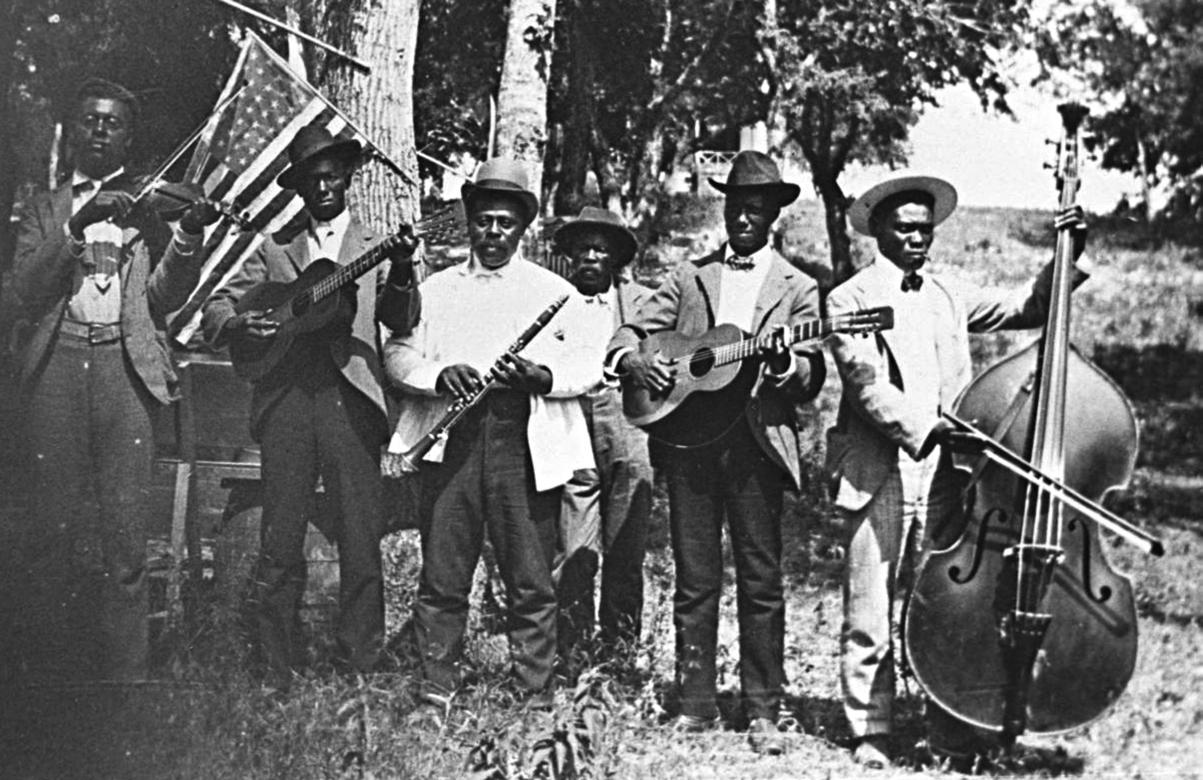
1865, Civil War Confederate leaders surrendered like tumbling dominos. Although the guns of the Civil War fell silent, a new battle was just beginning. Nearly 250 years of brutal African American slavery ground to a halt; however, the fabric of racial divisiveness was so deeply woven into the fabric of society that the grip held firm. In addition, Abraham Lincoln did not have the opportunity to see the fruits of his labor; he was assassinated April 15, 1865, just one week after the Civil War officially ended. Then, it was President Andrew Jackson who declared the “legal” end of the Civil War on August 20, 1866, declaring the “insurrection is at an end and peace, order, tranquility and civil authority now exist in and throughout the whole of the United States of America.”
In 1872, a group of African American freedmen gathered a collection of money to buy ten-acres of land and establish the Emancipation Park, near Houston. Unfortunately, Oklahoma’s first recognition of Juneteenth as a holiday was not until 1994. Then, June 17, 2021, President Joe Biden signed into law the Juneteenth National Independence Day Act; recognizing the day as a federal holiday.
Although the Juneteenth General Order was one of the greatest instruments of human liberation, which led the Black people down the lifechanging road to freedom, the path was still a bumpy road. During the Civil War, Indian Territory was a hideout for menacing outlaws and an escape

for Black enslaved people. Between 1865-1920, as many as fifty self-sustaining all-black farming communities rooted in Indian Territory, implementing a “safety in numbers” mentality and creating economic growth. Devastated by the agricultural crisis during WWI, followed by the Great Depression, the number of all-black towns greatly dwindled to fifteen: Boley (founded in 1903), Brooksville (1903), Lincoln/Clearview (1903), Wild Cat/ Grayson (1902), Greenwood (1906), I.X.L. or Indian Exchange Land (about 1900), Langston (1890), Lima (1913), Redbird (1902), Rentiesville (1902), Summit (1910), Twine/Taft (1902), Tatums (1895), Tullahassee (1850), and Vernon (1911).
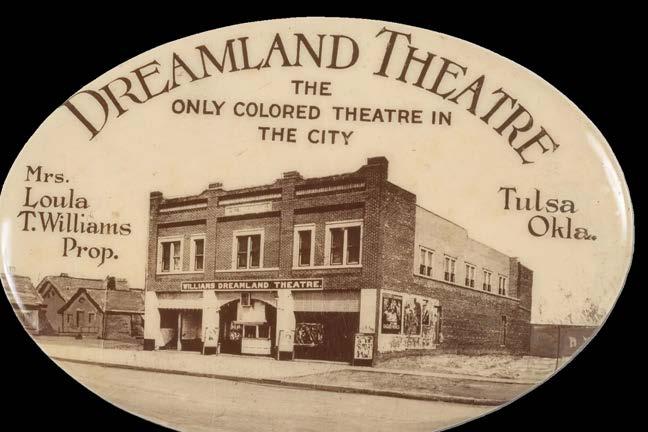
Land Acquisition – In an effort to abolish tribal governments and heavily press federal control, the Curtis Act was passed into law in 1898, allowing the Dawes Commission to document tribal citizenship rolls, survey and incorporate towns, establish public schools, and assign allotted land to individual citizens. That land might not be located in a convenient location or on profitable land. Officially referred to as the “Act for the Protection of the People of Indian Territory,” which was a complete fallacy, the Curtis Act stripped the five Indian Nations of nearly 90 million acres of land.
The land west of Indian Territory was recognized as Oklahoma Territory or Unassigned Lands, which experienced a series of seven

“first-come, first-serve” land runs that brought settlement to Oklahoma. The first land run on April 22, 1889 also brought many African American settlers for their piece of the red-dirt pie in the “promise land.” This is where we meet Mr. O.W. Gurley, who became the founder of Greenwood in north Tulsa; he even has his own Wikipedia page.
The Birth of Greenwood – Ottaway W. Gurley was born in Alabama on Christmas Day, 1868 to previously enslaved parents; and, he grew up in Pine Bluff, Arkansas. After attending public schools and Branch Normal College, he worked as a teacher and postal worker. He wed in Arkansas, but bore no children. In 1893, the Gurley’s traveled to Oklahoma Territory to participate in the Cherokee Outlet Land Run of 1893, where they staked a claim on land that later became Perry, Oklahoma. O.W. was a true territorial entrepreneur; he became the treasurer of Noble County, a school principal and operated a general store for about 10 years.
Salt was a highly sought commodity during the mid to late 1800s and that need sparked the drilling of a salt well in the Salina area of Indian Territory in 1859, which accidentally brought a new commodity…oil. The crude was used medicinally for humans and livestock, to fuel oil lamps

and to lubricate machinery. Robert Galbreath arrived in Indian Territory in 1901 in search of oil and became involved in the discovery of the Red Fork field. Then, he and Frank Chesley slyly slipped away and quietly discovered the Glenn Pool oilfield on Ida Glenn’s Indian allotment, about twelve miles south of Tulsa, in the shadows of Sapulpa. The boom was too big to contain from media and oilmen flocked to Tulsa to get their part of the “Oil Capital of the World” with O.W. Gurley hot on their trail.

In 1905, Gurley sold his land allotment and store in Perry, and moved his wife eighty miles east to the boomtown of Tulsa. He purchased 40 acres of land in North Tulsa, just north of the Frisco railroad tracks, which was dedicated to be sold “only to colored people.” He was recognized as a real-estate genius and visionary. He planted roots and built the Gurley Hotel and several other buildings, which he rented to other business operators. He founded the Vernon A.M.E. Church, built a building to house the Masonic Lodge and operated a black employment agency. John “The Baptist” Stradford became Gurley’s business partner. Stradford’s fortune grew to include the 3-story, 54-room Stradford Hotel, two dozen rental houses, also several pool halls and shoeshine parlors.
Greenwood’s separation boundaries were Pine Street to
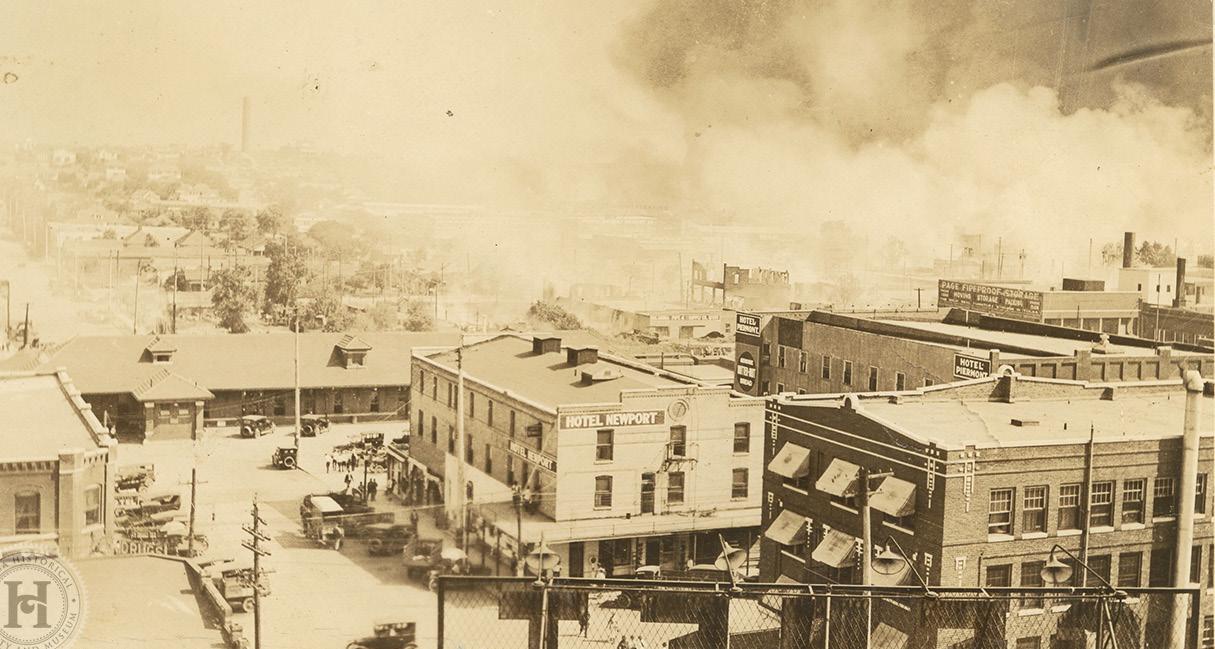
the north, Archer Street and the Frisco railroad tracks to the south, Cincinnati Avenue on the west, and Lansing Avenue on the east. By 1920, the Greenwood District had grown to 35 square blocks filled with a thriving self-sustained community where money exchanged hands 19 times before it ever stepped over the threshold of Black Wall Street into world circulation. Now, that is economic strength.
Additionally, according to the 1920 U.S. Census, Greenwood was home of an estimated 11,000 African Americans, with the majority consisting of freedmen and their families of the Cherokee, Choctaw, Chickasaw, and Creek Nations. Businesses reportedly included a bank, an undertaker, clothing stores, hotels, restaurants, and movie theaters. There were 33 Black professionals – including 15 physicians and surgeons, six real estate agents, four pharmacists, three lawyers, and two dentists; 24 skilled craftspeople – including 10 tailors, five building contractors, and four shoemakers; 26 service workers – including 12 barbers, six shoe shiners, and five clothes cleaning shops. Greenwood Avenue was also the center of the business district where the Dreamland and Dixie Theaters were entertainment.
According to Greenwood historian Scott Ellsworth, Black Wall Street boasted the following: “The community counted two Black schools (Paul Laurence Dunbar and Booker T. Washington), one Black hospital (Morton Hospital), and two Black newspapers (The Tulsa Star and the Oklahoma Sun). Greenwood at the time had some thirteen churches and three fraternal lodges (Masonic, Knights of Pythias, and I.O.O.F.), plus two Black theaters (Williams Dreamland Theatre and the Dixie Theatre), a U.S. postal substation, a Y.M.C.A. branch, roller skating rink and a Black public library.” Also, the community boasted a brick yard, bus system and a chartered airplane company to accommodate the community members who owned six private airplanes.
Scott Ellsworth continued, “From the modern office buildings that were rising up out of downtown, to the electric streetcar trolleys that rumbled back and forth along Main Street, to the rows of freshly painted houses that kept pushing the city limits further and further into the surrounding countryside, compared to other cities, Tulsa was nothing short of an overnight sensation. Indeed, Tulsa had grown so much and so fast – in a now-you-don’t-see-it, now-you-do kind of fashion – that local boosters called a Magic City.” A sort of a self-sustaining utopian

Simon Berry was a resourceful Greenwood businessman. In 1919, Tulsa’s taxi service was only available to White passengers, so Berry started a “jitney” service using his own Model-T Ford. Jitneys were an early form of taxi service that charged a small fee for service. For just a nickel, Berry would transport passengers all the way to downtown Tulsa. Berry also had an auto repair shop on Archer Street where he was an auto mechanic and trained other’s mechanic skills. He invested in the bus system


and thirty-two of his graduate mechanics became Greenwood’s first bus drivers. He was also an experienced pilot who started Greenwood’s first air transportation system and made his air charter service available to everyone, regardless of race. With his range of established businesses, Berry was said to have employed more Black people than any other Greenwood entrepreneur.
Many White residents and businessmen of the Tulsa area felt threatened by the success of the Black entrepreneurs of Greenwood and tensions were at a constant high level. Then, the fateful day that forever marred history, the day the paths of shoeshine man Dick Roland and elevator operator Sarah Page crossed and tangled into a web of misunderstanding, erupting into an event that wrecked the futures of African American families in Greenwood. Fire, looting, arson and MURDER! The worst single incident of racial violence in the history of America was unleashed upon the streets of “Black Wall Street.”
The Greenwood District was cloaked with 23 houses of worship in 1921 and among them, the Mount Zion Baptist Church

which was completed in 1921. Just two months later, the fortress of faith took on the worst battle Satan had ever laid at Christian feet. When the fire calmed and the smoke cleared, the chapel had crumbled, leaving a charred façade. With unrelenting strength, the parishioners refused to yield to the hate that befell their community. Some people deal with devastation and loss by falling to their knees. Some struggled to rise and never recovered, while others rose with the fierce desire to not only recover but to excel past previous expectations.
The Oklahoma Commission to Study the Tulsa Race Riot of 1921, also known as the Tulsa Race Riot Commission (TRRC), was established in 1997 to investigate in grim detail. Although the Commission report listed the Black deaths at 26 and the White deaths at 13, many survivors believe the loss of life to be in the hundreds as many deceased were buried in unmarked graves at Oaklawn Cemetery, Newblock Park, Booker T. Washington Cemetery and unmarked graves along the Arkansas River. The June 10th front-page article in the Black Dispatch newspaper titled LOOT, ARSON, MURDER debunked the Tulsa Tribune’s “rush to judgement” article printed earlier in June, 1921 about Ms. Sarah Page and Dick Rowland, implying Rowland had assaulted Ms. Page. Dick Rowland was never charged with a crime but the pent-up racial tensions erupted onto the streets of north Tulsa like no disaster in history.
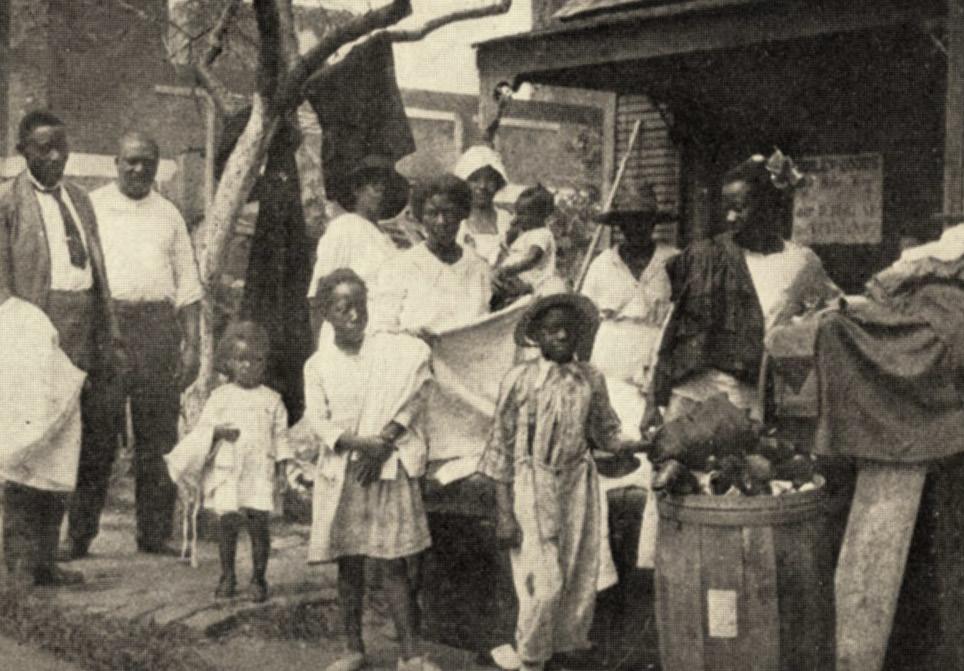
Bullets flying, incendiary devices falling from the sky, and torch welding White people marching the streets, setting Greenwood ablaze and sending hundreds of Black residents fleeing, some unable to escape lay dead in the streets. This was the first time in American history that U.S. bombs were dropped upon our own soil, upon our own people. In the aftermath, panning the 35-blocks of Greenwood, 9,000 people were homeless and the foggy remains of a once vibrant business community lay in ruin. The damages were estimated at 2.5 million dollars, the equivalent to 44 million dollars today. One would think buying life and property insurance protection would have been their saving grace; however, only if the residents and business owners had purchased a separate “riot insurance.” Who would have thought

that was a necessity? There was no living assistance after the riot and no life or fire insurance payments due to the riot clause; thus, the event was not called a massacre until much later.
The 1921 Race Riot at Black Wall Street was a community plight of mayhem, an 18-hour racial civil unrest of all-out war. The residents of the Greenwood District were the shining example of wealth and prosperity. Now, they were left standing upon earth that had experienced an apocalyptic disaster at the hands of an angry White mob, left with nothing but the shirt on their backs, forced to gather their resilient determination to rebuild or move on, which many did.
Black Wall Street was not a place; it was a mindset of community growth.
An innocent happening erroneously reported by the Tulsa World newspaper, erupted into one of the worst one-day
terrorist events in the history of America. The gun fire from one weapon followed by a barrage of bullets, fire ravaged buildings and homes, resulting in a huge loss of life and property. When the sun arose the following day, among the still smoldering ruins, 191 previously flourishing businesses were GONE, the shells of brick buildings shadowed in the smoky morning dew and hundreds of Black citizens lay dead.
The years O.W. Gurley invested in the rise of “Black Wall Street,” fell in one day. Gurley watched as his visions and dreams melted into the earth. According to the “Autobiography of Buck Colbert Franklin,” O.W. Gurley and his wife Emma could not bear the devastation, so they moved to Los Angeles, CA. where they operated a small hotel; later died and are buried there.
“This is the land on which the Greenwood District was built, destroyed, rebuilt, dismantled and reborn.” Greenwood Rising Museum
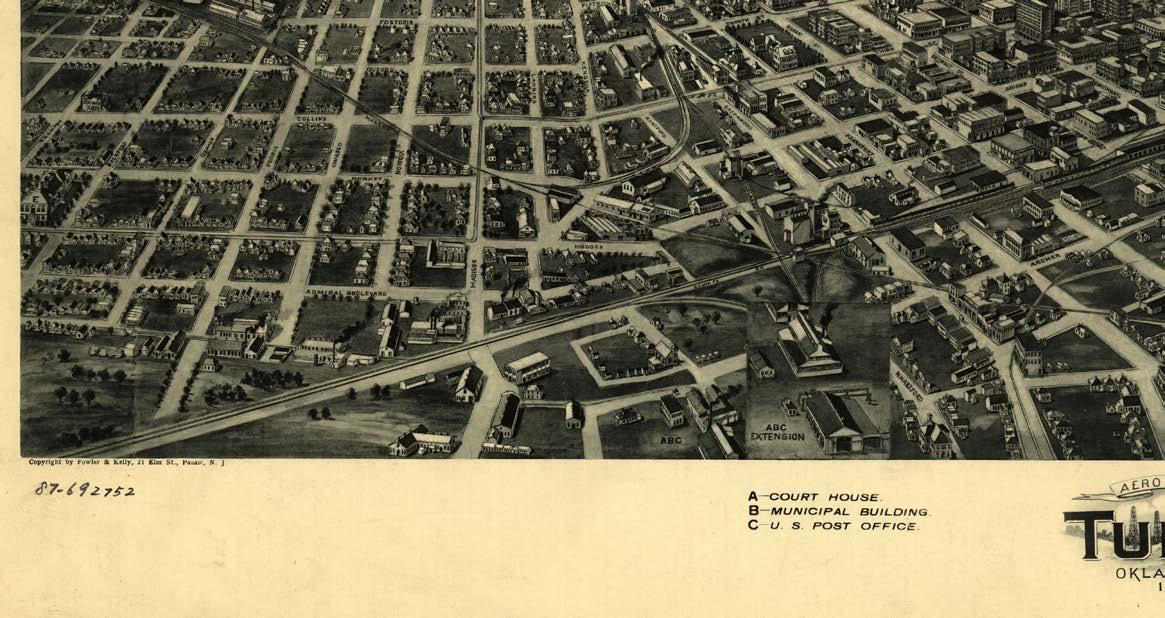


The Greenwood residents who stayed, worked diligently to rebuild, only to face devastation a second time in the 1960s and 1970s. In the name of progress, the Greenwood District was rezoned to increase the tangled web of highways dangling overhead. The “urban renewal” not only distracted from the beauty of the area…it was a reminder that history has repeated itself because we did not learn.
The Native Americans experienced the loss of their native lands during removal to Indian Territory. Then, the Curtis Act stripped the five Indian Nations of 90 million acres of land during the Oklahoma Territory land runs. History repeated when the Black people of Greenwood experienced the loss of property not once, but twice also. Their first loss was the burning of Black Wall Street; then, much of the Greenwood District was razed for a public works project…through eminent domain in the forward of progress…a new highway. Eminent domain is the power of
the government to take private property for public use. Although some eminent domain cases have been fought in court, few have been won.
Interestingly, the dusty dirt road that became Greenwood Avenue, the Avenue of distinction that witnessed a city grow within a city, now cuts through the Tulsa campus of Oklahoma State University. No longer the mecca of African American entrepreneurship and wealth.
In the words of our late President of Peace, who even won the Noble Peace Prize, Jimmy Carter said during his 1971 inaugural address, “The time for racial discrimination is over. The bonds of our common humanity must overcome the divisiveness of our fears and prejudices. We are responsible for creating a world of peace and equality for ourselves and future generations. We are better than this.”


by Debbie Neece
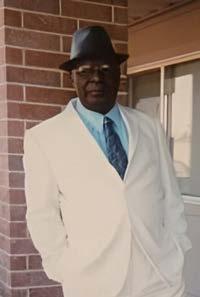
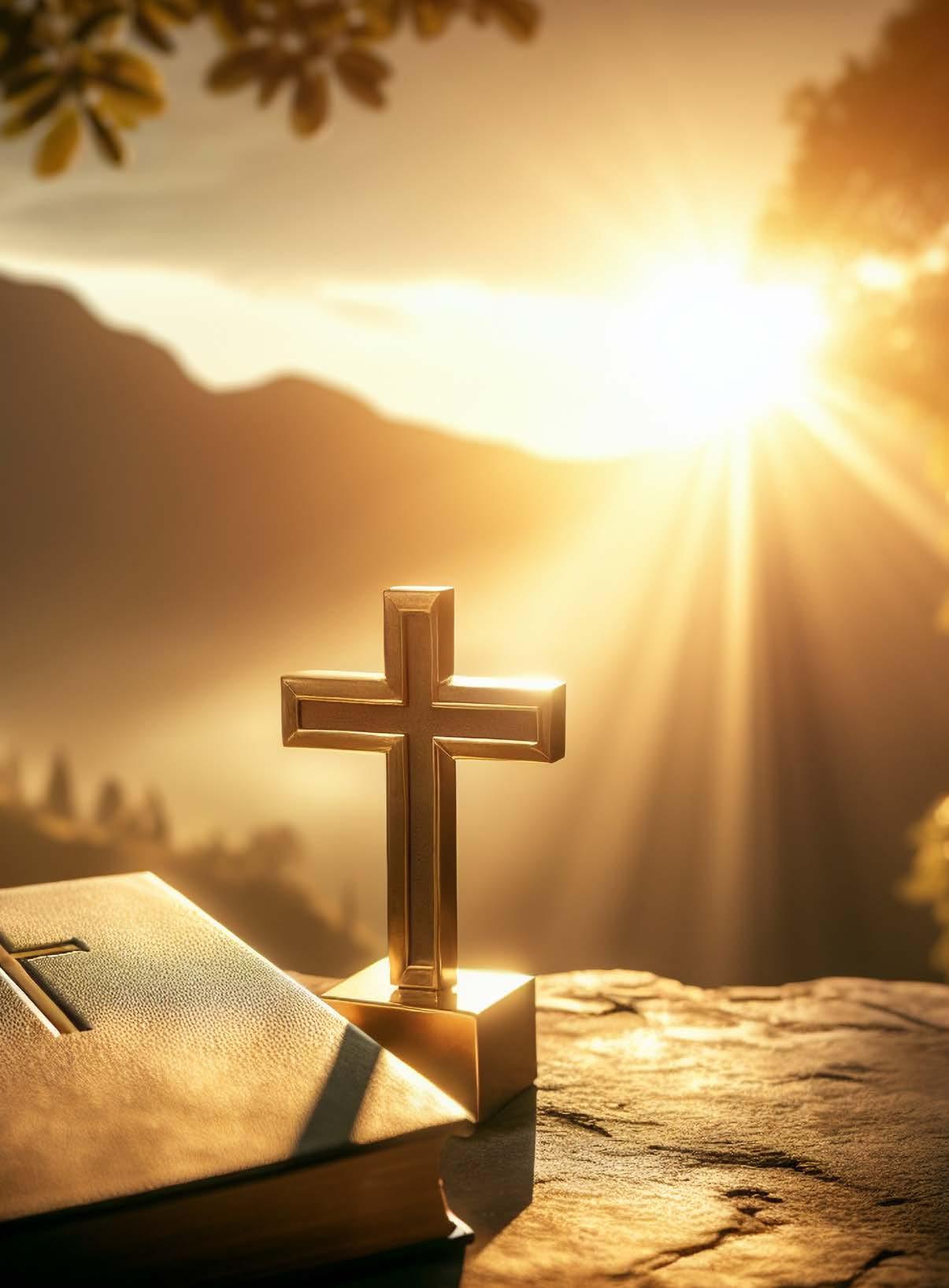
Melvin Julius Ellison attended the segregated Booker T. Washington School in Pawhuska, where he played Panther basketball as the team captain with the nickname “Smoke.” He was also a member of the chorus, band and drama class…graduating in 1953. In 1955, Pawhuska’s American Legion Post sponsored a basketball game between the Harlem Magicians and the Booker T. Washington Panther alumni and Melvin took his place on the court. The following year, he was inducted into the Army.
Ivory Mae Crawford attended Hominy’s segregated Carver High School, where she performed in three-act plays like “A Ready-Made Family.” Interestingly, Ivory came from a family of 15 children…a huge ready-made sports team of sorts. Ivory was active in class activities including serving as the defense attorney for the Student Council Misdemeanor Court… graduating in 1957.
Melvin and Ivory married at Hominy and moved to Bartlesville as newlyweds in 1959. Ivory worked at the Bureau of Mines, while Melvin worked with Jim Crammer Concrete/ Construction and Tex Tannehill Concrete. He graduated Oklahoma State University Institute of Technology, obtained his plumber’s license and established Ellison’s Plumbing…working from the family home and retiring in 1985. He then worked at Phillips Petroleum Company; retired again in 1994.
Ivory obtained her Department of Human Services CNA Certificate and then her Sociology Major through Rogers State University and Tulsa Junior College. She worked as an Independent Living Counselor for Green Country in Bartlesville; after moving to Tulsa, she worked as an Independent Living Counselor for Ability Resources for 10 years, before retirement.
Ivory was listed on the Tulsa Junior College Dean’s Honor Roll, and received the Governor’s Commendation Award and Governor Keaton’s Court Appointed Special Advocate for Washington County Association for Mental Health.
Three children made them a family. Alicia graduated College High School in 1975 and Myron in 1978; then, he served in the Army. Sandra said she went to Jane Phillips Elementary for kindergarten but racial tension made the experience difficult so she attended first through sixth at St. John’s Catholic School and thrived; then, attended Central Junior High and graduated from Col-Hi in 1979. Additionally, Michael Ellison,
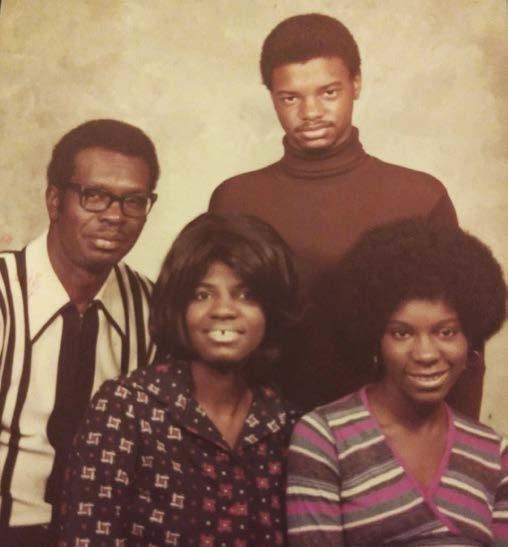
grandson, was raised by the Ellison’s and inducted into the 2016 Bartlesville Athletic Hall of Fame as a member of the 1989 Bruins Basketball Team.
The Ellison’s lives in Bartlesville were constantly challenged but their faith in God carried them through. Their daughter, Sandra said, “Ivory lost a hand in an on-the-job accident; and, when my dad was unemployed, St. John’s Catholic Church and Greater First Baptist Church were so kind to us. My dad was also diagnosed with glaucoma during that time; so, both of my parents had disabilities. However, they never let the disabilities deter them. Their strong faith in God and desiring an excellent education for their children were always the center of our lives. God, Family and Education.”
Pawhuska’s Booker T. Washington School held a class reunion June 2024; however, Melvin Ellison missed the reunion… he passed away April 30, 2023 and now rests in the Pawhuska Cemetery. Ivory Ellison Thomas is 85 years young and living in Tulsa, ever close to God, family and friends.
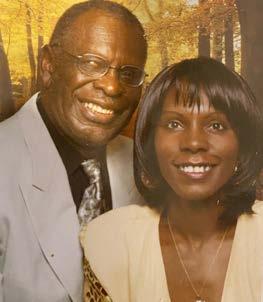






The most-liked pet will be highlighted with a full-page picture in our magazine. The Judges’ Choice Winner will be featured on our April Cover!
• Although we love them all - scaly, slimy, feathered, and fluffyyour pet must be furry to compete.
• Pets MUST be currently living and pictured by themselves in order to compete.
Registration opens on February 28 at noon at bartlesvillemonthly.com. Facebook voting will be held March 7 at noon CST to March 14 at noon CST.
QUESTIONS? Visit us online at bartlesvillemonthly.com for more details. Entries are limited to the first 100 online reservations.

We can’t wait to meet your furry friend!


Bartlesville Polar Plunge
9AM; Richard Kane YMCA
1 8 9 11 20 21 22
Time Travelers Indoor Market
11AM; 2350 Washington Blvd Suite 320
Time Travelers Indoor Market
12PM; 2350 Washington Blvd Suite 320
Family Movie Night w/ Young Professionals
6PM; 515 SW Frank Phillips Blvd
Bruin Varsity Girls vs Broken Arrow
6:30PM; Bruin Fieldhouse
Bruin Varsity Boys vs Sapulpa
8PM; Bruin Fieldhouse
Public Star Gazing –Bartlesville Astronomical Society
6PM; Jo Allyn Lowe Park
Bruin Varsity Girls vs Jenks
6:30PM; Bruin Fieldhouse
Bruin Varsity Boys vs Jenks
8PM; Bruin Fieldhouse
Wee-Cycle Presale Day ALL DAY; Washington County Fairgrounds
Wee-Cycle Spring/ Summer Sale
9AM; Washington County Fairgrounds
Wee-Cycle Spring/ Summer Sale
9AM; Washington County Fairgrounds Mon Feb 24

Hands on Minds on Math and Science Night
6PMl Madison Middle School
On the Rock Schedule
Camp Rock, 3rd-5th grade
Monday: Kane, Jane Phillips, Osage Hills, Ranch Heights
Tuesday: Wayside, Wilson, Hoover, home school/ private school drop off Rock buses pick up after school on your student’s appointed day, parents pick up at The Rock by 6 pm for all camps. Summit, 9th-12th grade
Thursdays: Rock bus picks up at BHS after school. Nitro, 6th-8th grade Fridays: Rock bus picks up at Madison, Central, Osage Hills after school. Bartlesville Public Library
Storytime Babies and Toddlers
Tues., Wed., Thurs. 10:00 a.m. – 10:30 a.m.
600 S. Johnstone Avenue Weekly Programs at the Bartlesville Public Library
Storytime Preschool
Tues., Wed., Thurs. 11:00 a.m. – 11:30 a.m.
600 S. Johnstone Avenue

Sat, Feb 1
10:00 a.m. – 4:00 p.m.

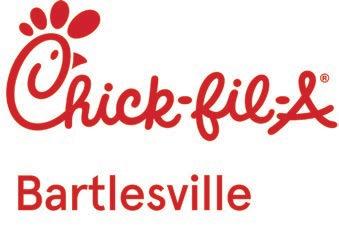
Bartlesville & Beyond Boutique
Marketplace
Tuxedo Lions Club Community Center, 2900 Tuxedo Blvd, Bartlesville
9:00 a.m. – Done
Bartlesville Polar Plunge
The Richard Kane YMCA, 101 N Osage Ave, Bartlesville
Sun, Feb 2
10:00 a.m. – 12:00 p.m.
Tom’s Elton Tribute
Bartlesville Community Center, 300 SE Adams Blvd.
Tues, Feb 4
12:00 p.m. – 1:00 p.m.
In the Kitchen with Susan at the Bartlesville Public Library
Bartlesville Public Library, 600 S. Johnstone Avenue
5:30 p.m. – 6:30 p.m.
Bartlesville Public Library ELL
Conversation Class
Bartlesville Public Library, 600 S. Johnstone Avenue
6:00 p.m. – 7:00 p.m.
Johnstone Irregulars Book Club
Bartlesville Public Library, 600 S Johnstone Ave.
6:45 p.m. – 7:45 p.m.
Bartlesville Public Library ELL
Conversation Class at Casa Hispana
Wed, Feb. 5
11:00 a.m. – 12:00 p.m.
Bartlesville Public Library ELL
Conversation Class
Bartlesville Public Library, 600 S. Johnstone Avenue
Sat, Feb 8
All Day
Visit Dewey Second Saturday Shop Downtown Dewey
11:00 a.m. – 7:00 p.m.
Time Travelers Indoor Market
Washington Park Mall, 2350 SE Washington Blvd Suite 320
7:30 p.m. – 9:30 p.m.
Appassionata: Romance by Candlelight
Bartlesville Community Center, 300 SE Adams Blvd.
Sun, Feb 9
12:00 p.m. – 6:00 p.m.
Time Travelers Indoor Market
Washington Park Mall, 2350 SE Washington Blvd., Suite 320
Tues, Feb 11
5:30 p.m. – 6:30 p.m.
Bartlesville Public Library ELL
Conversation Class
Bartlesville Public Library, 600 S. Johnstone Avenue
6:45 p.m. – 7:45 p.m.
Bartlesville Public Library ELL
Conversation Class at Casa Hispana
Casa Hispana, 3850 Frank Phillips Blvd., Bartlesville
Thurs, Feb 13
11:00 a.m. – 12:00 p.m.
Bartlesville Public Library ELL
Conversation Class
Bartlesville Public Library, 600 S. Johnstone Avenue
2:00 p.m. – 4:30 p.m.
Stained Glass Art Class at Jarrett Farm Resort and Events
Jarrett Farms Resort and Events, 38009 US Hwy 75, Ramona




Thurs. & Fri., Feb 13 & 14
5:30 p.m. & 7:30 p.m. (2 seatings)
Valentine’s Dinner in The Lodge Woolaroc, 1925 Woolaroc Ranch Road, Bartlesville
Fri, Feb 14
5:30 p.m. – 8:30 p.m.
Valentines Date Night Stained Glass Workshop
Okie Stained Glass and Mosaic, 137 SE Washington, Bartlesville
Sat, Feb 15
10:00 a.m. – 11:30 a.m.
Monthly Lego Club at the Library
Bartlesville Public Library, 600 S. Johnstone Avenue
6:30 p.m. – 8:30 p.m.
Nineteen0eight Mixology Tales: 1920–1933—The Prohibition Era
Nineteen0Eight, 311 ½ S. Dewey Avenue, Bartlesville
8:00 p.m. – 12:00 a.m. midnight
Saturday Karaoke at Crossing Second February 15, 2025
Crossing 2nd, 215 E. 2nd Street, Bartlesville
Tues, Feb 18
5:30 p.m. – 6:30 p.m.
Bartlesville Public Library ELL
Conversation Class
Bartlesville Public Library, 600 S. Johnstone Avenue
6:45 p.m. – 7:45 p.m.
Bartlesville Public Library ELL
Conversation Class at Casa Hispana
Casa Hispana, 3850 Frank Phillips Blvd., Bartlesville
Thurs, Feb 20
11:00 a.m. – 12:00 p.m.
Bartlesville Public Library ELL
Conversation Class
Bartlesville Public Library, 600 S. Johnstone Avenue
12:00 p.m. – 1:00 p.m.
Fast, Fresh & Fabulous with Chef Hilary
Bartlesville Public Library, 600 S Johnstone Ave.
12:00 p.m. – 8:30 p.m.
Wee-Cycle Bartlesville Spring/ Summer Sale
Washington County Fairgrounds, 1109 N Delaware Street, Dewey
2:00 p.m. – 3:00 p.m.
Gentle Reads Book Club
Bartlesville Public Library, 600 S. Johnstone Avenue
Fri, Feb 21
9:00 a.m. – 7:00 p.m.
Wee-Cycle Bartlesville Spring/ Summer Sale
Washington County Fairgrounds, 1109 N Delaware Street, Dewey
5:00 p.m. – 9:00 p.m.
Bartlesville Gymnastics Super Rockstar Meet
Phillips 66 Gymnasium, 411 S Keeler Ave, Bartlesville
Sat, Feb 22
8:00 a.m. – 9:00 p.m.
Bartlesville Gymnastics Super Rockstar Meet
Phillips 66 Gymnasium, 411 S Keeler Ave, Bartlesville
9:00 a.m. – 12:00 p.m.
Wee-Cycle Bartlesville Spring/ Summer Sale
Washington County Fairgrounds, 1109 N Delaware Street, Dewey
6:00 p.m. – 9:00 p.m.
Uncork Your Support, The Latin American Tour
St. John’s Church-Father Lynch Hall, 715 S. Johnstone Ave., Bartlesville
8:00 p.m. – 12:00 a.m.
Saturday Karaoke at Crossing Second
Crossing 2nd, 215 E. 2nd Street, Bartlesville
Sun, Feb 23
8:00 a.m. – 4:00 p.m.
Bartlesville Gymnastics Super Rockstar Meet
Phillips 66 Gymnasium, 411 S Keeler Ave, Bartlesville
7:30 p.m. – 9:30 p.m.
The Addams Family A Musical Comedy
Tues, Feb 25
5:30 p.m. – 6:30 p.m.
Bartlesville Public Library ELL
Conversation Class
Bartlesville Public Library, 600 S. Johnstone Avenue
6:45 p.m. – 7:45 p.m.
Bartlesville Public Library ELL
Conversation Class
Casa Hispana, 3850 Frank Phillips Blvd., Bartlesville
Thurs, Feb 27
11:00 a.m. – 12:00 p.m.
Bartlesville Public Library ELL
Conversation Class
Bartlesville Public Library, 600 S. Johnstone Avenue
7:00 p.m. – 9:00 p.m.
Theater Bartlesville - The Importance of Being Earnest
Theater Bartlesville, 312 S. Dewey Ave., Bartlesville
Fri, Feb 28
7:00 p.m. – 9:00 p.m.
Bowl For Kid’s Sake
Red Apple Bowling Center, 1414 SE Washington Blvd, Bartlesville

At Primary Care Associates, PC, your check in process is completed with one of our employees, not a tablet or computer. check in process is completed with one
Anywhere Medical Clinic





The MDVIP difference - All interactions at Primary Care Associates are accomplished with a real employee, not a tablet or computer. It's one of our Superpowers.


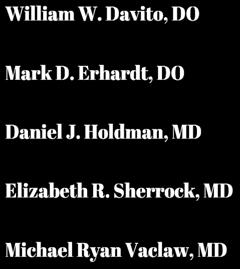
Primary Care Associates Now Powered by MDVIP!


by Raittia Rogers
When a child is born, they come into the world with clenched fists. One rationalization according to a certified pediatrician, this could be a neurological reflex called the palmar grasp– this reflex is activated when something is pushed into a newborn’s palm, like a caregiver’s finger. There is the belief that each person is born with a special gift that is why babies come into the world clenching their hands – they will be grasping their talents. Mrs. Rogers who has many talents but had a rough start in life. The author of the book “I Broke Out of Prison” wears many hats such as speaker, Seer, evangelist, minister, wife, mom, entrepreneur, editor, freelancer, voice over, actress, writer, author, filmmaker, community activist leader, and a DOC Badged volunteer leader at women prisons.
Growing up in Tulsa Oklahoma, Mrs. Rogers did not have it easy. “I had it rough growing up,” she shared with Bartisville Radio. From an early age she learned survival skills which landed her in trouble even at school. Her childhood extracurricular activities involved her being gang affiliated, getting involved with narcotics, alcohol, and crime among other delinquents from 11 years old.

As a teen, Mrs. Rogers was in and out of juvenile detention for various crimes. Her home situation left Mrs. Rogers mean and angry. “I did not make parenting easy for my mom. At 11 years old, when I was in elementary school, a bully was making fun of my mother. “After school and I beat him up,” she says. This was the street credibility that triggered and lead to violence as a copying mechanism – a survival skill that her mother emphasised was needed to make it in the ghetto projects.
Life became hard when her father was arrested and later sentenced to serve a 40 year prison sentence for armed robbery. On the other hand, her mother was greatly affected and ended up seeking solace in men, drugs and alcohol. Her grandparents ended up raising her oblivious of what she was going through and involvement with the bad crowd on the streets. She experienced further sexual abuse in the form of statutory rape by an older guy which resulted in her having a child at the tender age of 15.”

Her healing came unexpectedly at 21 years old when in jail in 2003. “I was arrested and this time my back was up against the wall with no one to come bail me out like the previous times.” While serving an eight-year sentence after a life of violence, crime and gang activity I accepted Jesus into my life. this was a pivotal moment as she began to explore and embrace a newfound freedom in religion. “I began finding out who I am in God and realizing that I needed healing. I’ve figured out since that time that I’m still on the road to recovery forever, and it is a process
Out of this prison experience, the current influential media personality and history changer we have come to know as Mrs. Rogers was born. Now her journey is about helping others especially reaching out to the broken. God gave me the title of the book after praying, because I got my freedom spirituality, mentally, physically, financially and socially and on. “I do not live a criminal lifestyle anymore and my mindset has been reset to live right and stay on track.
In 2007 Mrs. Rogers found love and married to her supportive husband in 2012. To date, she has received the Author of the Year Award at the Women of Color Expo Tulsa August 2023 for her best selling award winning book. The published author and filmmaker has announced and launched of a second book – I Broke Out Prison 2. The series has been adapted to a documentary film available for viewing on YouTube. The featured film has since debuted and selected onto the big screens in different film festivals and some movie theatres around the country.
We are honoured to feature the success story of the phenomenal Renowned Raittia Rogers. We applaud this hard working entrepreneur, and wife for her strength, honesty and being the example that change can happen if you work hard towards your calling. She has been instrumental in helping people get healing through various projects and from painful past experiences while working to achieve her dreams at the same time. Through Mrs. Rogers story may you be inspired to use your talent; that one you came into the world with –clutched tightly in your palm’s grasp – to full potential despite any setbacks you may have faced in life.
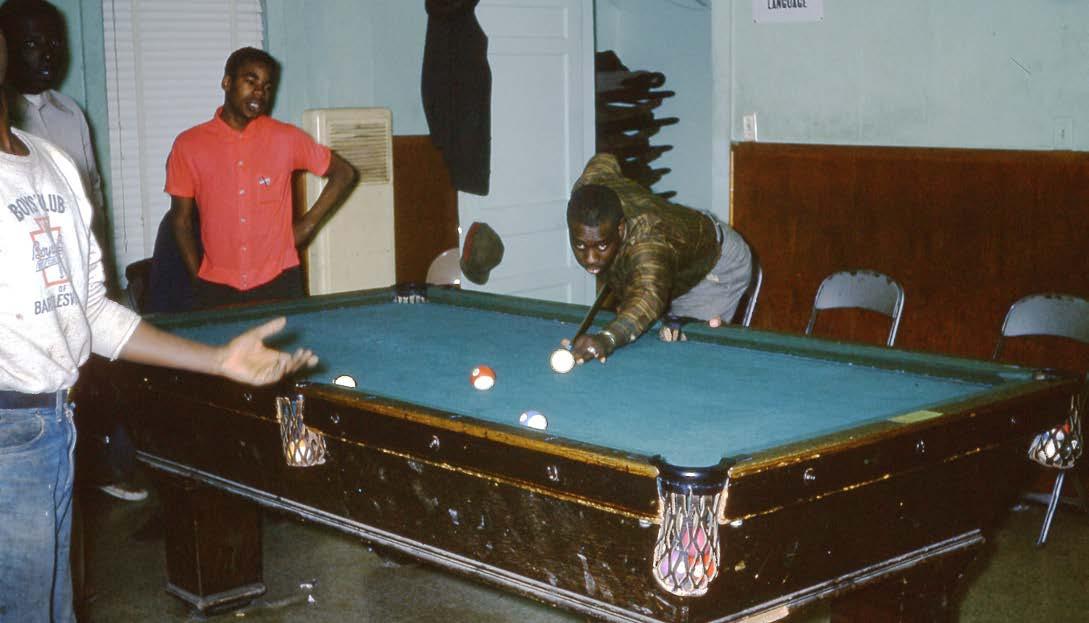
by Debbie Neece
In 1937, 75 black citizens attended a meeting at the Bartlesville Colored Baptist Church as the initial planning session for a Westside Community Center (W.C.C.); however, the movement fell short.
In March 1950, the westside citizens gathered in mass with renewed vigor. Mr. T.P. Scott was chairman of the W.C.C. Committee, joined by Kabby Mitchell, Mrs. James Brittenum, Joe Harris and Rev. R.D. Drew serving on the committee. Unfortunately, the onset of the Korean War in June created another speed-bump, shelving the project until fall. At that time, the non-profit W.C.C. Association was incorporated with William McGinley, A.F. Potter and R.R. Durand as directors; and notable Bartlesville residents serving on the committee. Then, another blow to their progress. On October 26, 1950, the National Production Authority issued an order banning new construction to prioritize building materials for the war effort.
However, there was a “Bartlesville Blessing” about to unravel. In 1948, the westside of the 400 block of Keeler Avenue was cleared of homes to allow construction of the Phillips Petroleum Company’s 12-story Adams Building at 411 S. Keeler Avenue. The 192-foot-tall building offered office space and

recreational opportunities for Phillips employees with a swimming pool, bowling alleys, fitness center and an auditorium/gymnasium which offered space for Phillips 66er basketball games, gymnastic events, graduations and more. The Manhattan Construction Company completed the modern building in 1950, implementing the architectural designs of Neville, Sharp and Simon. Along 4th Street and Keeler Avenue, a wooden construction office was built to oversee the daily construction activities. Once the Adams building was completed, the construction office became surplus.
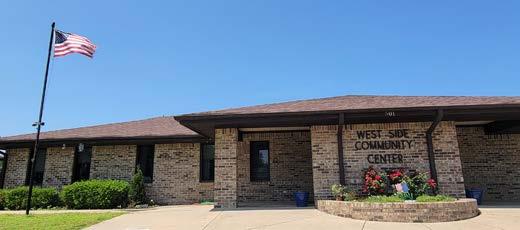
An opportunity presented itself November 1950, when the Phillips Petroleum Company gifted the Adams Building construction office to the Westside community. The property at 9th and Oak was purchased from the City of Bartlesville for $1.00 and a budget was set aside for building operations and a full-time director. Bids were taken to move, remodel and equip the building, allowing the construction to move forward. Funds were raised by “public subscription” and houseto-house solicitation with $15,000 being raised. The building was moved to the site January 1951 and Charles Woodruff was hired as the architect. The T.P. Scott Construction Company was hired to remodel the 4,100 square foot W.C.C. building to provide a
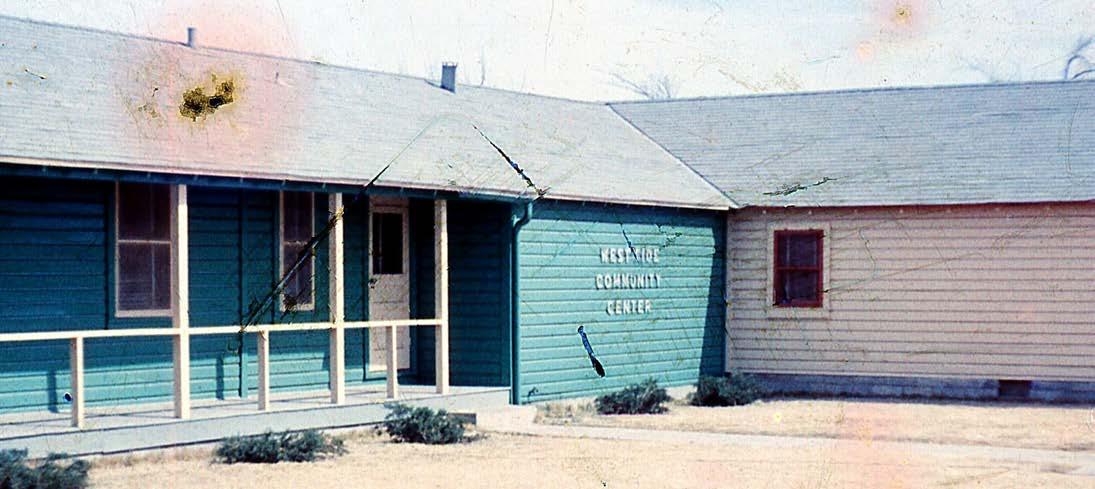
kitchen, snack bar, banquet room, recreation and meeting rooms, lounge and office.
Bartlesville’s Community Chest for a bigger and better Bartlesville was created in 1943 as a single funding drive to help defray charitable and social welfare expenses for the betterment of the community. Among the agencies supported were the Y.M.C.A., Y.W.C.A., Boy Scouts, Girl Scouts, Welfare Association and the Salvation Army. In 1946, the local Community Chest executed a Red Feather Campaign as a branding stimulus allowing the funds to be collected within a two-day effort. Only the Welfare Association and Salvation Army were purely charitable organizations, while the others were character-building activities for the youth of the community, equally deserving of community support. The October 1951-52 Community Chest Drive carried a goal of $89,842.51. This campaign added the W.C.C. to the 1951 benefit list, providing the operational expenses and salary for the full-time director. The Community Chest evolved to become the Bartlesville Regional United Way.
In July 1951, the Bartlesville Playground Association donated funds to the W.C.C. to purchase outdoor playground equipment and gave the children free rides at the Westside Park, precursor to the Kiddie Park, for the remainer of that season.
The wooden W.C.C., located at 9th and Oak, was destroyed by fire during August 1986 and was replaced by the current 56,000 square foot brick building at 501 S. Bucy Avenue, with the Douglass Park just south. The Executive Directors at the current W.C.C. location have been James Abraham, Morris McCorvey, Sharon Reece, Lorront Carney, Chenin Patton, and Shavon Annette Robles, who shared:
“The W.C.C. is more than a community center—it’s where dreams take root and futures are built. Through programs like W.E. Pro$per and the reimagined C.A.S.H. and YouthPreneur Program, we are equipping young people with the tools to thrive and lead. My focus is on celebrating cultural diversity, fostering intergenerational wealth, and preparing both youth and adults for future success through innovative education, career readiness, and wellness programs. Programming highlights also include programs like Intergenerational Garden, Pillars of Progress,

Peace Pioneers, Summer Fine Arts and the Schmoldt Technology Center—a cornerstone of W.C.C. resources. This center provides access to technology and tools that empower individuals to thrive. Additionally, it serves as a hub for after-school tutoring, language learning and workforce development. Our mission is to inspire innovation and create opportunities. By uniting generations and empowering individuals, we are building a stronger, more connected community.”
The Westside Community Center’s mission has been accomplished on so many levels!
The Westside Community Center is extremely goal oriented. About 2002, the W.C.C. began All That Jazz as a fundraiser and recently added Echoes of Time Black Tie Gala to their efforts. Now, there is an exciting opportunity for the community to help the W.C.C. establish a solid financial foundation says Executive Director Shavon Annette Robles. “I am especially proud of the endowment established with the Bartlesville Community Foundation to secure W.C.C.’s legacy for future generations. Our goal is to raise $2.5 million by 2026, our 75th anniversary. This endowment provides a stable financial foundation to support long-term sustainability and growth, enabling us to weather economic fluctuations and continue offering essential programs and services for years to come. Partnering with the Bartlesville Community Foundation allows us to leverage their expertise to maximize the impact of every contribution. This collaboration ensures our endowment is managed with the highest level of stewardship, aligns with our values of integrity and continues to meet the specific needs of our community. I invite the community to partner with us in this mission and secure our legacy by contributing to the endowment. Other ways to collaborate include volunteering— whether teaching, mentoring, or advocating for our programs. Together, we can shape the future of Bartlesville.”
Now You Know *

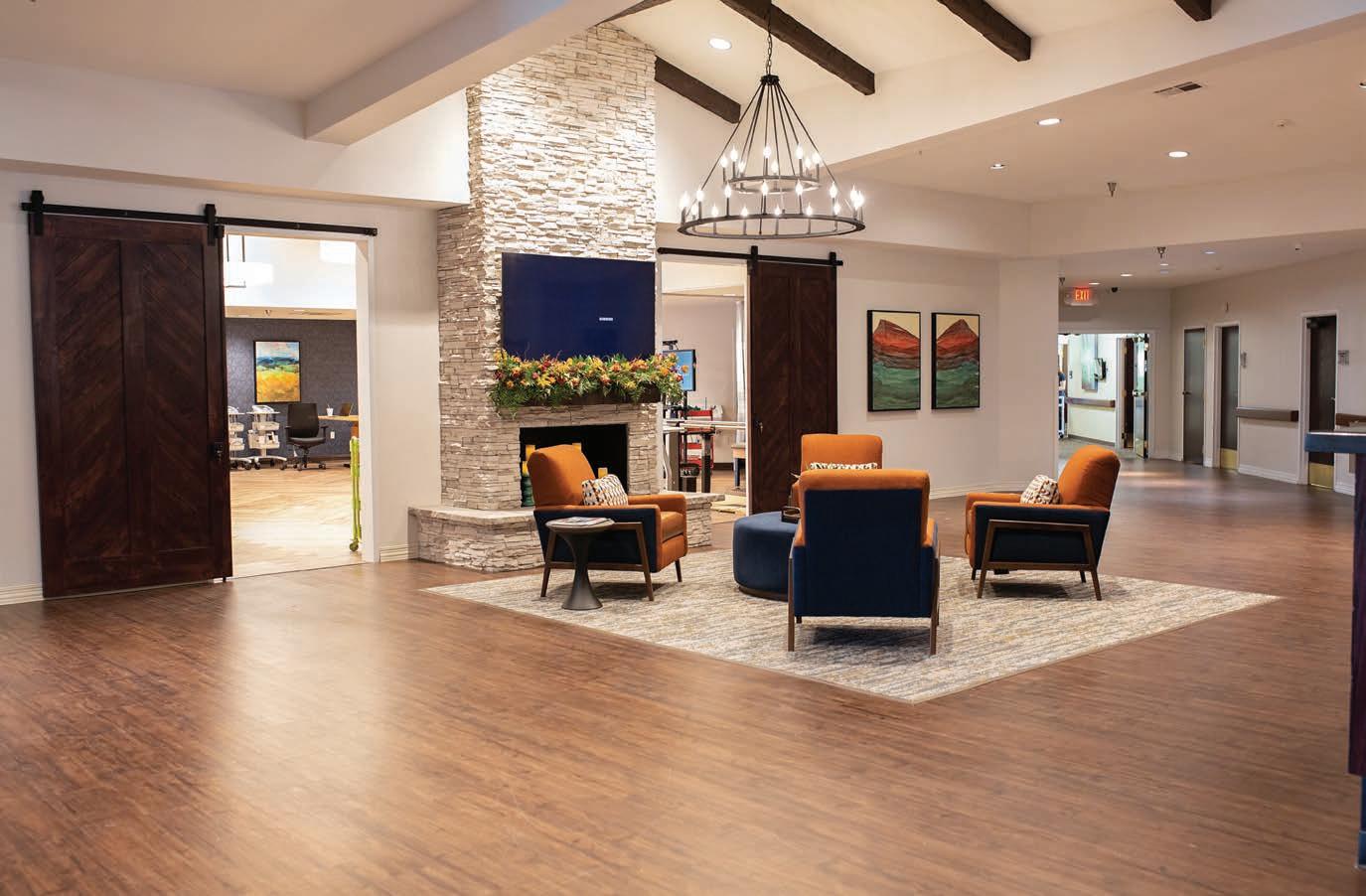

Let your hair down and party with the men of Girls Night Out The Show at Osage Casino Hotel Bartlesville. Don’t miss the ultimate ladies’ night on March 1. GET
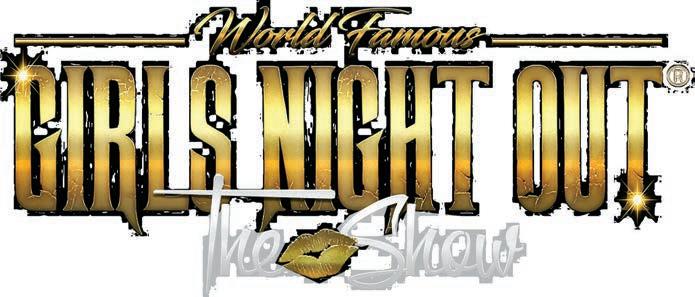
MARCH 1

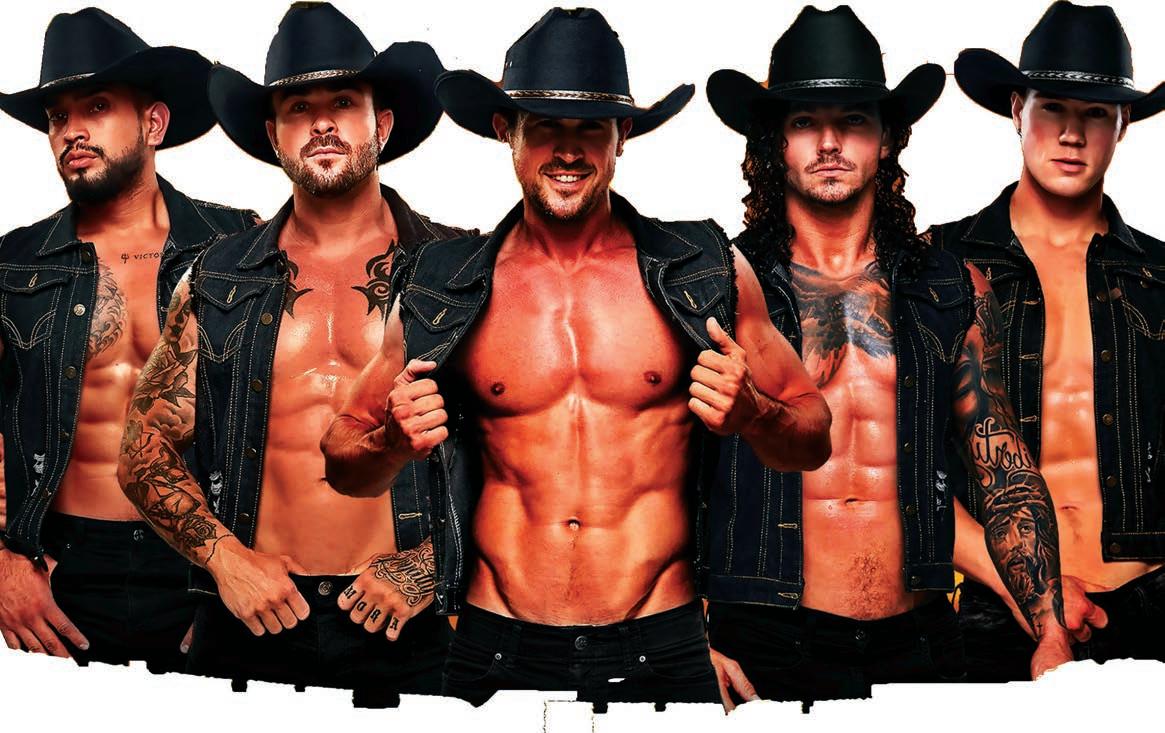



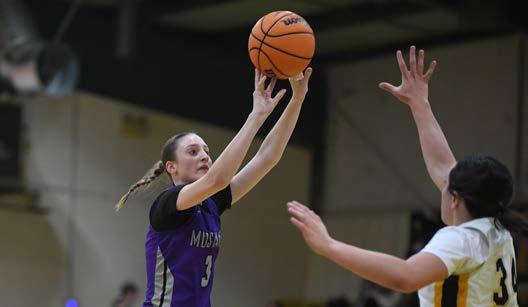





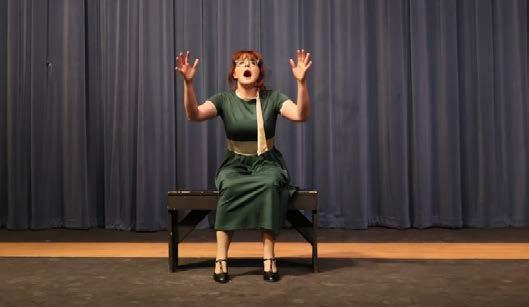

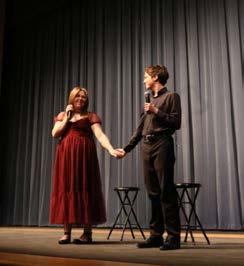


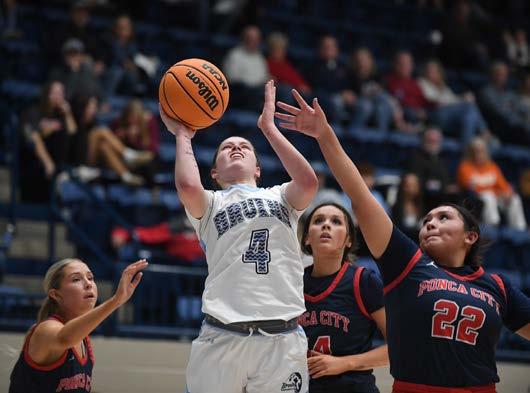




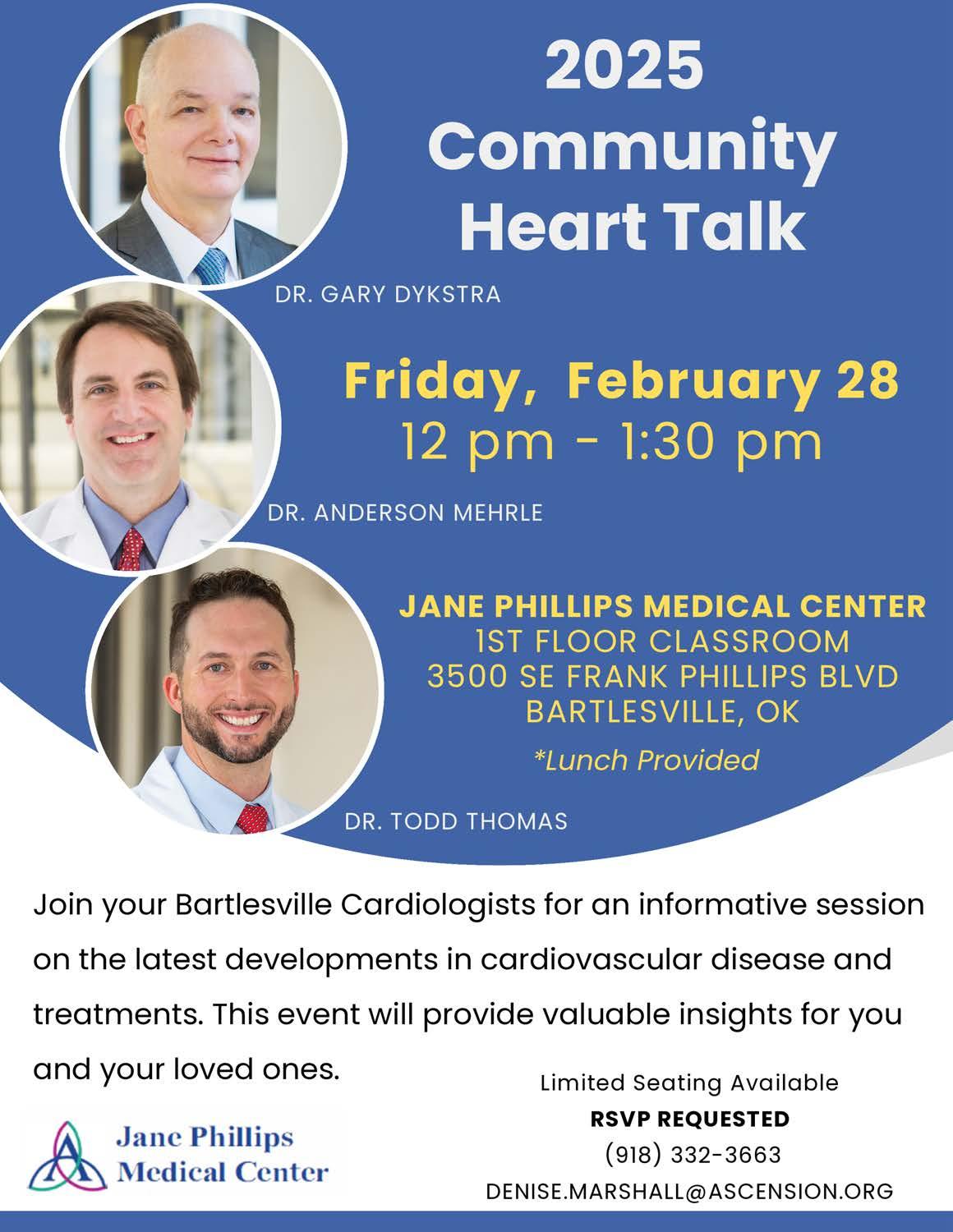


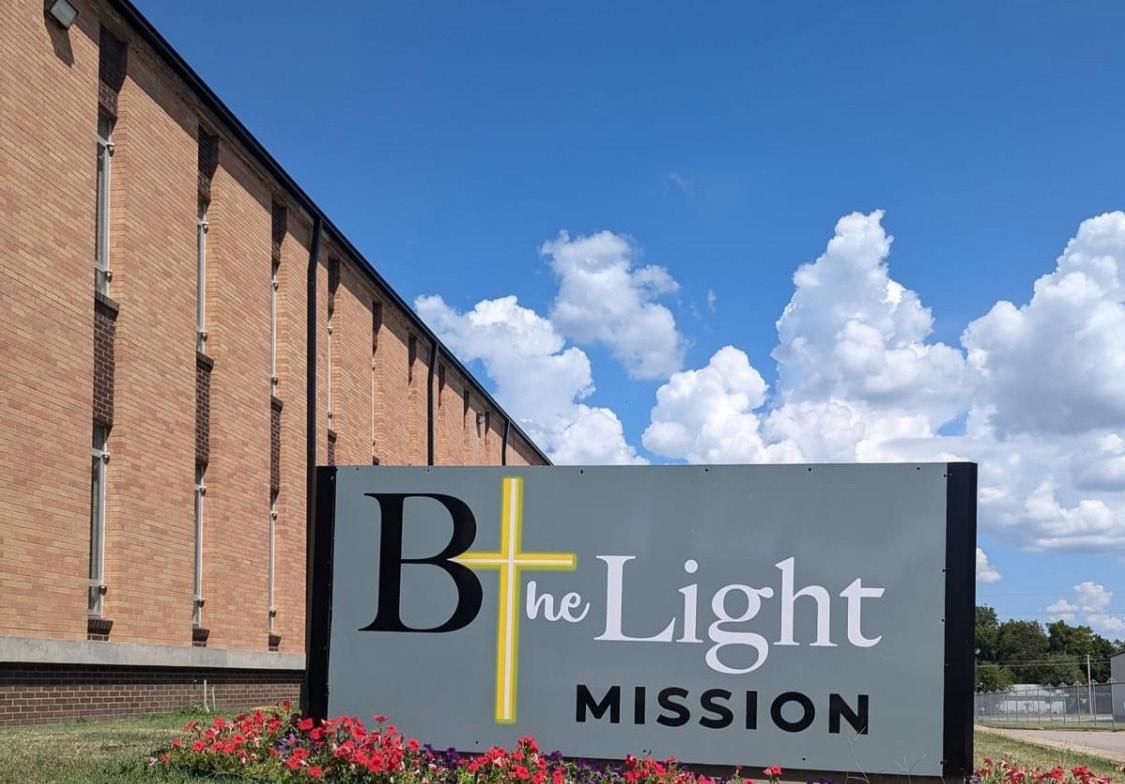



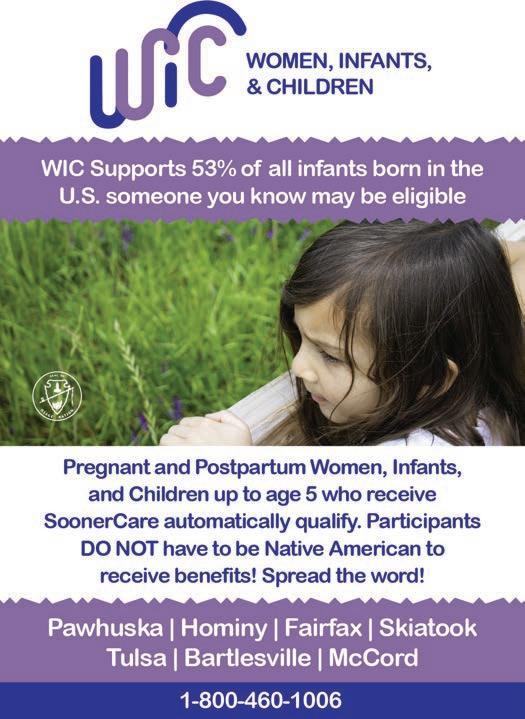




by Kelly Hurd
If you’re looking for hope and encouragement, this is for you.
I walked into the bank one day not too long ago, and one of the tellers asked me where I was from originally.
I looked at her and smiled and said, “Texas.” (She confessed she was interested in my accent.)
The other teller candidly asked me how I ended up in Oklahoma.
I looked her straight in the eyes, saw a softness, and then gave her my standard answer, “Tragedy,” -
I then went on to tell her how God redeemed my tragedy and, much to my surprise, replaced it with a love story - like only He can…
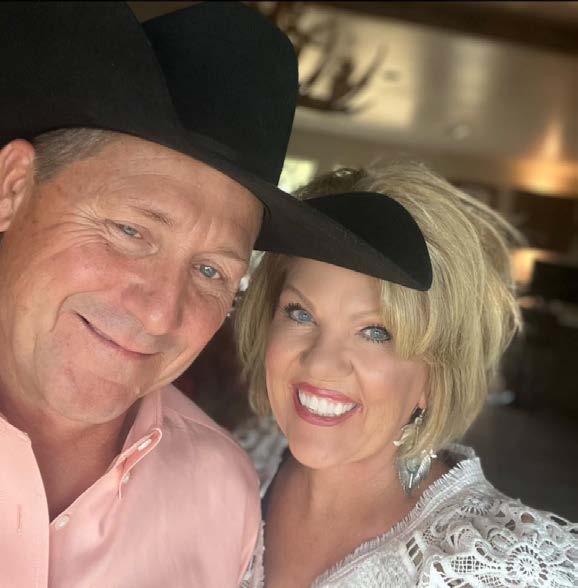
Before all this, I was visiting with my amazingly handsome newly-wed husband, John, one morning about writing, as we were drinking coffee, and was telling him I do not write from a place of pain like I used to, but from a

place of healing… No more writing to cope but instead writing to inspire hope.
After visiting with the tellers, I got to thinking a few things-
One, pain is inevitable but it’s the process that tempers the testimony, deepens the depth of understanding, and turns it all into a hallelujah.
When I look into women’s eyes, because of where I’ve walked, I see things many might not. Things that are only recognizable to me because they’re familiar. Once upon a time, I lived it…but not anymore.
Two, when you’ve drank a cup of sorrow, you see the tears of others - before they fall.
Three, when you’ve lingered long with loneliness, you hear the silent longing in lonely hearts.
And four, when you’ve wept awake at midnight mourning, you understand the delight in dancing for joy when deliverance dawns.
I didn’t tell the tellers all that… but those after-thoughts made the pain and madness of years past - purposefulbecause it’s given me eyes to see, ears to hear, words to speak, and a heart that knows the gift of giving all three.
You may have heard it said, “Weeping may endure for a night, but joy comes in the morning…” (Ps 35).
Well, I’m here to tell you that it’s true.
I’m living proof because “I would have lost hope if I hadn’t believed I’d see the goodness of the Lord in the land of the living,” (Ps 27) and I’ve seen it - and danced to it as well.
May your pain become purposeful in creating praise that shakes the gates of hell and imparts hope where despair has run rampant for far too long.
In this season of Love, may you find the One True Love, the One Who Is Love, and come to know that He loves you more than you realized and that He’s better than you think He is…Happy Valentine’s Day!
#ItsTimeToDreamAgain #ThisIsMyStory #ThisIsMySong
With over 20 years of experience, BiosHealth is your state-licensed agency committed to providing exceptional caregiver and home care services.
What services are offered?
Services are tailored to individual needs such as: •

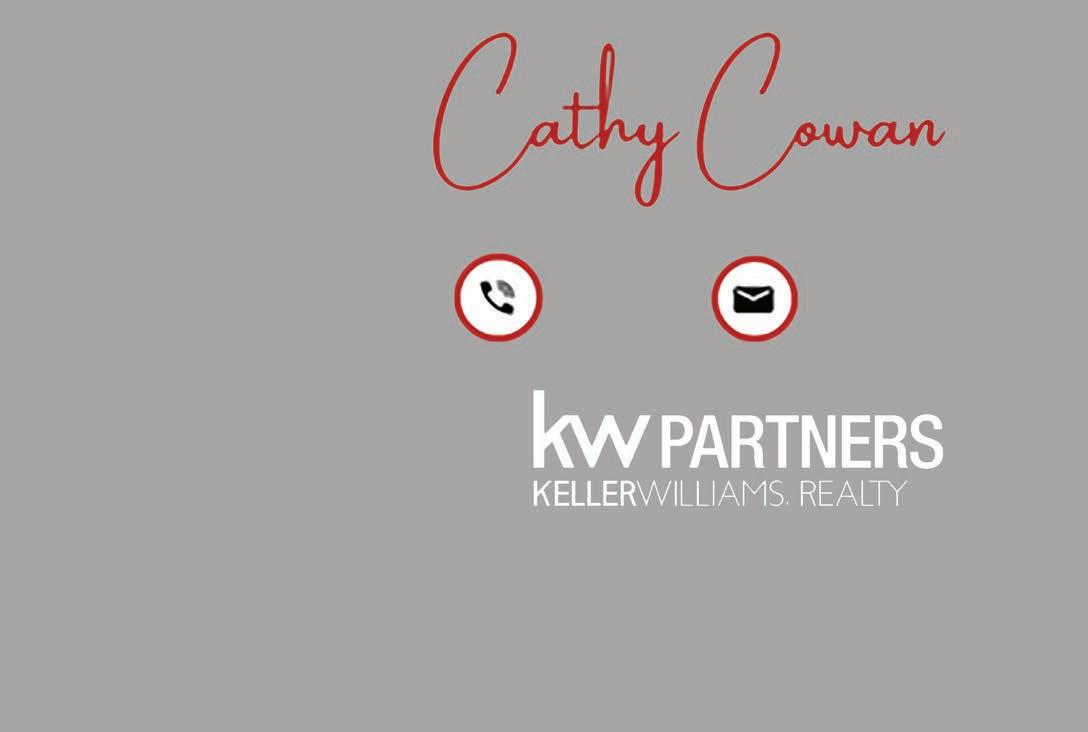

by Lori Just
Get ready to show your shamrock spirit and go green for a great cause! Join the annual Shamrock the ‘Ville 5K and Fun Run on March 8th, where the streets will be filled with energy, excitement and a sea of green.
This USATF-certified, chip-timed event kicks off at Unity Square and takes you through the charming streets of historic downtown Bartlesville. Best of all, it’s for a fantastic cause— proceeds support Catholic Charities Mary Martha Outreach (CC-MMO), which helps provide essential items to those in need. Whether you run or walk, you’ll be making a difference in the community.
Race is as scheduled, rain or shine. Last year, over 700 runners showed up in spirit despite the cold temperatures. And every registration matters as it directly impacts the services offered at CC-MMO which include a food pantry, clothing center and crisis response. They also provide diapers and haircuts to anyone who needs them. This fundraiser is vital to provide sustainability to their mission and to this community. Last year, CC-MMO distributed over 2.8 million pounds of food to our community and surrounding areas.
“ShamRock the ‘Ville provides so much support to our organization,” emphasized Wishall. “A lot of people don’t realize all the behind-the-scenes things that we do. We love collaborating with other organizations in our community. We purchase hygiene items, new school clothes and winter coats with our United Way funding so this race allows us to add to those needs. We assist families in need during times of crisis, house fires or just struggling to get by. Times are tough. We are seeing families that could make ends meet before that simply can’t now. So, we are there to give them a hand up.”


The need continues to grow, with a significant increase in those seeking assistance over the past year. CC-MMO has been welcoming
an average of 30 new families each month.
“We have applied for a grant to be able to issue ID’s,” said Wishall. “Whether it’s a driver’s license or just an identification, those things aren’t cheap, so we are hoping to be able to implement that service.”
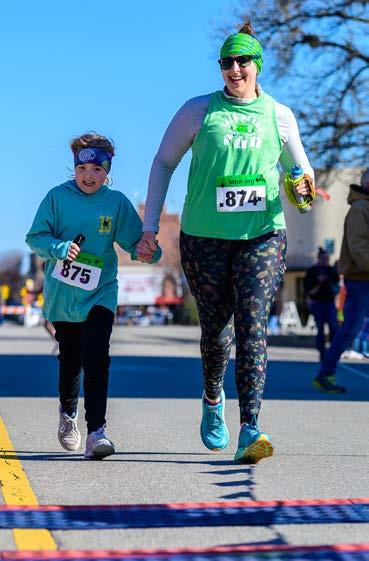
Awards will be given to the top three finishers in each age and gender category, including youth and overall male/ female divisions. However, it’s not just about the prizes that have kept participants returning year after year—it’s the fun, festive atmosphere of this fundraising race that makes it a must-do event!
“We don’t care if you come to run for leisure, to compete or just to have fun,” said Wishall. “We welcome everyone at this race! There will be a lot of laughs and of course amazing t-shirts! We are kinda known for that.”
Avoid the line on race day by registering online and attending the pre-party and packet pick up at the CC-MMO Warehouse (1845 W 4th) on Thursday, March 6 from 6:00 –8:00 p.m. There is day of registration starting at 7:30 a.m. on with the race firing at 9:00 a.m.
“For those who aren’t running, there are still plenty of ways to join in the fun!” said Wishall. “You can take part in the onemile fun run shortly after the main race begins, cheer from the sidelines or be one of our fantastic volunteers. There are many ways to be part of this festive race and fun run!”
Registration is $25 or sign up to volunteer by visiting shamrocktheville.com.
If you have a qualifying chronic condition, UnitedHealthcare offers plans you can count on for your whole life ahead. With benefits built with you in mind, our plans aren't just health insurance, they're healthy living.
UHC Complete Care OK-9 (HMO-POS C-SNP) plan offers:
$0 monthly premium
$82 credit every month for OTC and food
$25 or less for covered insulin
Call to see if you qualify

Alex Tarasenko Licensed Sales Agent 918-688-1197, TTY 711 everythinginsurancegroup@gmail.com www.EverythingInsuranceGroup.com
$0 Tier 1 and Tier 2 Rx copays
$30 copay for specialist visits
See any provider in our National Network
Plans are insured through UnitedHealthcare Insurance Company or one of its affiliated companies, a Medicare Advantage organization with a Medicare contract. Enrollment in the plan depends on the plan’s contract renewal with Medicare. The healthy food benefit is a special supplemental benefit only available to chronically ill enrollees with a qualifying condition, such as diabetes, chronic heart failure and/or cardiovascular disorders, and who also meet all applicable plan coverage criteria. Contact us for details. Benefits, features and/or devices may vary by plan/area. Limitations, exclusions and/or network restrictions may apply. Food and OTC benefits have expiration timeframes. Call your plan or review your Evidence of Coverage (EOC) for more information. You will pay a maximum of $25 for each 1-month supply of Part D covered insulin drug through all Drug Payment Stages except Catastrophic Drug Payment Stage where you'll pay $0. Tier 1 and Tier 2 $0 cost share applies to all drug payment stages. Network size varies by local market and exclusions may apply. ©2024 United HealthCare Services, Inc. All Rights Reserved. Y0066_240709_083433_M

by Joe Todd
Jack Sauber was born 12 February 1925 in Butte, Nebraska. The family moved to Oklahoma in 1929 and settled on a farm near Okeene. He started school at St. Mary’s at Okeene, taught by the Benedictine Nuns. He said the Depression didn’t affect the family too much because they lived on a farm and raised much of their own food. He graduated high school in Okeene in 1941 and began working at the Okeene Grocery. On December 7th, 1941, after mass, he got his rifle and went rabbit hunting. He was hunting near the farm of Jim Nault and Mr. Nault said, “Jack, if you see any Japs out there, you can shoot them.”

This is the first he heard about the attack on Pearl Harbor. He worked on the farm until he was to be drafted and joined the Navy 3 Jun 1943 and sent to San Diego for Boot Camp. In Boot Camp, he said they learned to march, fire a weapon and taught how to jump off the side of a ship. Boot Camp lasted three months, then he was sent to Quartermaster School to learn to steer ships. The school was also in San Diego. In the school, he learned to communicate with semaphores and light. He had to learn Morse Code because light is Morse Code.
The school lasted three months and he went aboard the USS Saratoga at Hunter’s Point in San Francisco 22 Dec 1943. On the Saratoga, he had to stand two watches every forty eight hours and was easy duty. He had to help clean their sleeping quarters and the plot house where the ship was steered. He said they had twice as many men as they needed and said most of the guys had just finished Boot Camp and were in training on the ship. He said the Saratoga was an aircraft carrier and they had the F6F Fighters, TBF Torpedo planes and the SBD Dauntless dive bomber.
They left San Francisco and went to Pearl Harbor. He said there were too many military in Hawaii and did not enjoy Hawaii. They left Hawaii for the Marshall Islands and the planes from the Saratoga provided support for the invasions of Eniwetok, Tarawa, Majuro, Ulithi and others he cannot recall.
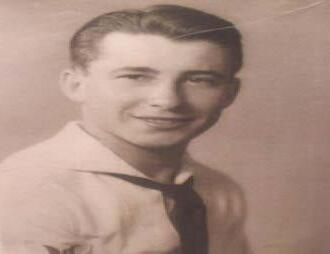
The Saratoga was in open sea when the airplanes left for the invasions and he never saw any combat, all he saw was open water. The Saratoga then joined the British fleet off Ceylon, and they made strikes on Sumatra and Java. On Sumatra, the planes hit the Japanese installation on Sabang and badly damaged the airfield, sunk one ship and the Japanese oil storage facilities. The Saratoga then attacked the Japanese refinery on Surabaya, Java. The ship went to Pearl Harbor for scheduled maintenance. The ship was then assigned to a task force with the USS Enterprise for the invasion of Iwo Jima. The Saratoga always had three destroyers as escorts. These destroyers were to provide protection and to pick any pilots that had been shot down. He was on duty 20 Feb 1945 when two Kamikazes attacked the Saratoga. He was on duty and saw the Kamikazes on radar coming in and knew one was going to hit the pilot house. The destroyers hit the Kamikaze and part of one wing knocked off, but he still hit the bow of the ship. He was informed that the bow was the target to keep the ship from launching airplanes. The other Kamikaze hit the hangar deck. The planes on the hangar deck had just been fueled and they were on fire and ammunition in the planes was firing off.
The ship was dead in the water for a while and the crew got the ship moving and another Kamikaze hit the ship. The ship survived and was taken to Bremerton, WA for repairs. As the ship was being repaired, they were informed they would take part in the invasion of Japan. The ship left Bremerton for Peal Harbor and was training pilots when the war ended. He was sure glad they didn’t have to invade Japan because they would have fought to the end and would have a terrible loss of life. He was on the Saratoga two years and was discharged 22 Dec 1945 and began working for Phillips Petroleum.
There will be a 100 th birthday celebration for Mr. Sauber 15 Feb at the First Wesleyan Fellowship Hall, 1776 Silver Lake Road 2:00 to 4:00 pm.


by Kay Little, Little History Adventures

We have all heard about all the oil companies and the men who ran those companies. Names like Foster, Straight, Price, Weber, Phillips, ITIO, Empire Gas & Fuel Co, Cities Service. But, where would these people and companies be without the secretaries, phone operators and custodians? These people are often overlooked. One of those was a man, Mannie Lee Gaylord, who served Cities Service Oil Company for over 30 years as a custodian.
The former Cities Service building, now the Bartlesville location for Rogers State University was built with nine floors. That is a lot to keep clean and presentable for the public. Can you imagine Frank Phillips without his butler, Henry Einaga or his secretary, Bill Angel? It takes a village to run a large business. Bartlesville was the center of very prosperous oil companies in the early 1900’s.
Mannie Gaylord was born in Greenville, South Carolina, February 7, 1884. He later moved with his family to Arkansas. In the year of Statehood, 1907, he moved to Bartlesville. He married Cora Higgins in 1911. They had one son, Mannie Jr. Cora died in 1927 and in 1930, Mannie Sr married Ollie Forbes. They continued to make their home in Bartlesville until his death in 1967. Ollie lived in Bartlesville until her death in 1977.
Mannie and Ollie were very active in the Greater First Baptist Church in Bartlesville. Ollie was also very active with the Olivet Chapter #68 of the Order of Eastern Star. Both funerals were at the Greater First Baptist Church and they are buried at White Rose Cemetery in Bartlesville.
Both of Mannie’s wives had children by other marriages, but they were all very close. Ollie brought two sons to the marriage, Lavert and Cathro Brown. Lavert died in Bartlesville at a young age, but Cathro moved to Wisconsin and started a plastic injection molding Company in Milwaukee. When studying

about Cathro, I read that many African Americans had their own businesses in that area. Another stepson, Ruben David Wilcots lived and died in Bartlesville and is also buried in White Rose Cemetery. Mannie Jr was involved in the military during WWII. He eventually moved to Milwaukee with his stepbrother, Cathro.
Mannie Sr was a very important part of the Cities Service history, having worked there for so long. He also was an employee of the City of Bartlesville for a few years. While he worked, his wife, Ollie, stayed home to care for the home and children. As I said earlier, she was very involved with her church and the Eastern Star. The family wrote a card of thanks for the local newspaper thanking everyone who helped during Mannie’s sickness and death. The list included several names of Bartlesville leaders.
While researching this family, I had a hard time finding much information, but I could tell that this was a very important family in our history. I would like to make a plea that when you have a family member who dies, make available an obituary that tells all about that person and their family members. If you have any more information about the Gaylords, please let me know at littlehistoryadventures@gmail.come. Mannie and Ollie sound like such an awesome couple.



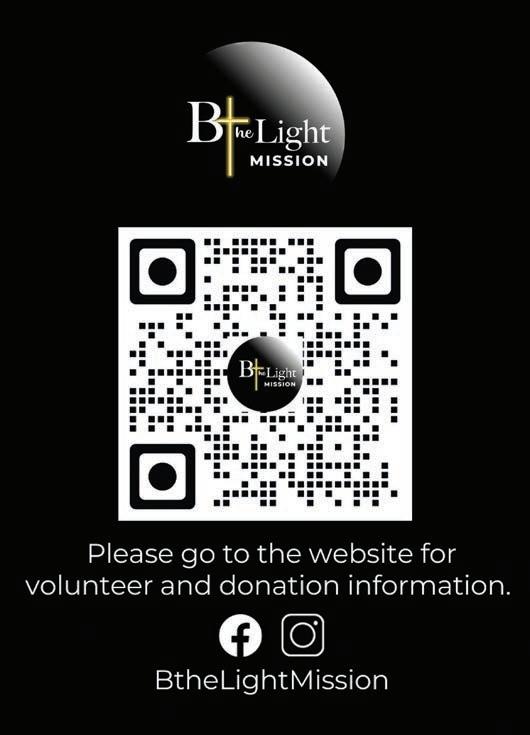



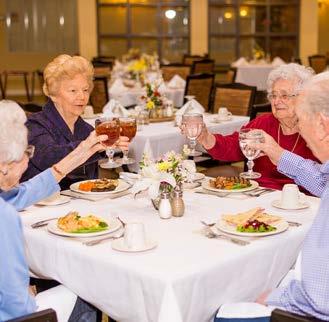


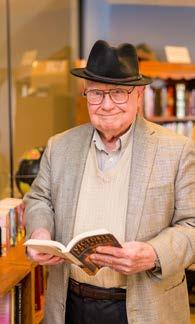

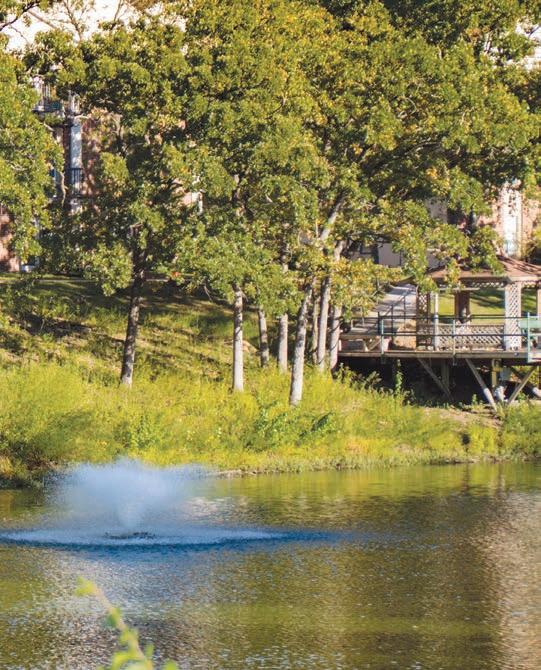
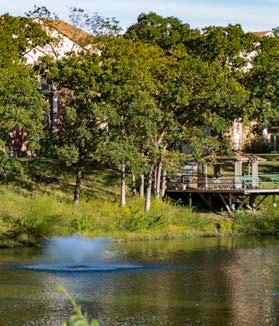
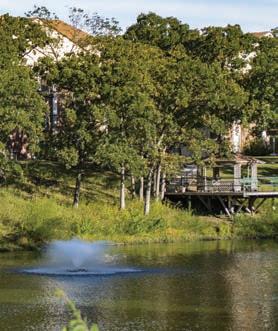








Bartlesville Health & Rehab Community provides a wide range of quality health care services. Locally owned, BHRC offers 24-hour licensed nursing care, skilled nursing services, long-term care, and in-house physical, speech, and occupational therapy. And now, BHRC offers memory care for those with Alzheimer’s disease or related disorders. This brand-new Memory Care Center (Memory Lane) is a secure 16-room unit with aroundthe-clock nursing care. For more information or to schedule a tour, call (918) 333-9545. 3434 Kentucky Place • 918-333-9545 • www.bartlesvillehealthandrehab.com
by Mike Tupa

It’s been almost 70 years since Venson Cumby tried out for the College High School football team.
Under normal circumstances such a pronouncement would hardly be extraordinary news — dozens of young athletes have tried out annually for prep football teams since before Teddy Roosevelt lived at the White House. Perhaps even prior to that.
But Cumby wasn’t just your average high school football recruit when he strolled onto the Wildcat practice field on Labor Day Weekend 1955.
Encouraged by his boss at his summer job, Cumby decided to try to become the first black student-athlete to play for Col-Hi — as well as one of the first black students to break the color barrier at the school.
Cumby was not your average personality. Throughout his entire life he believed that dreams were meant to come true, that miracles were a by-product of confidence and opportunity, that the heart never aged despite the number of birthdays one had endured, and that every person — family, friend or stranger — was a fellow respected traveler on the path known as mortality and after-life destiny. He exemplified the platitude plied by the iconic philosopher John Donne, referring to the ancient custom of ringing the village church bell when a rural neighbor was in trouble or had received bad news:
“Any man’s death diminishes me, Because I am involved in mankind. And therefore never send to know for whom the bell tolls; It tolls for thee.”

“God loves you, and so do I,” was Cumby’s cheerful salutation — up until his death in March 2022, at age 82.
Cumby was only 16 when he showed up at Col-Hi field to try out for the all-white football team. Cumby’s employer Lester Liss was the catalyst and connection for Cumby with Col-Hi.
The experiment lasted only one day.
In Cumby’s words, during an interview several years ago, he recalled:
“I was accepted with open arms at College High,” Cumby said. “The players accepted me right away I didn’t hear any racial slurs. ... I scrimmaged in the morning as a quarterback. But I was getting into the hole too fast. In the afternoon, he put me in at halfback. ... If they (Col-Hi coaches) kept me at quarterback I would have (stayed).”
Cumby stuck to his decision to play quarterback and returned to Bartlesville’s Douglass High School, designated for black students, to play football for coach Charles “Cool City” Smith. Cumby quarterbacked the Douglas Dragons to the 1955 state co-championship for black schools — the only time in history a Bartlesville high school has won a state grid title.
(In 2013, the Bartlesville Sports Commission inducted the 1955 Douglass High football team into the Bartlesville Athletic Hall of Fame. It would be one of the proudest nights of Cumby’s life.)
And what a life!
He rubbed shoulders with some of the greatest athletes and entertainers in the world, worked many years as a lab technician

for BF Goodrich headquarters in Akron, Ohio, after retirement started an automobile dealership in Akron, moved back to Oklahoma to work for Tulsa Public Schools and eventually returned to his native Bartlesville for his final quartercentury on this earth.
Graduating in 1956 from Douglass, Cumby received college athletic offers from schools in Texas and Kansas.
“But me being a poor man from a family of eight, the money was not there for me to go to college,” Cumby said.
In the spirit of Horace Greeley’s admonition almost a century earlier, Cumby decided to go west to try to find his fortune.
He went to work in Oregon for lumber baron Frank Gilcrease in a variety of capacities, including company business, chauffeur, skilled cook and other personal duties for the Gilcrease family.
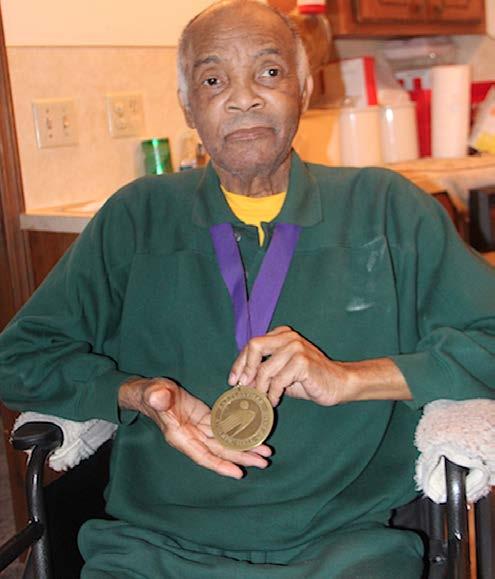
After several years with Gilcrease, Cumby traveled south to the Los Angeles area to visit his brother in Compton, Calif., and seek a new job.
That led to Cumby being interviewed and hired by legendary sports magnate Jack Kent Cooke, who would own the Los Angeles Lakers, the Washington Redskins and the Los Angeles Kings.
“Among my duties, I would pick him up at the airport and drive his Rolls Royce into the Forum (built in 1967 by Cooke, where the Los Angeles Lakers and Los Angeles Kings played),” Cumby recalled. “One thing he’s always say when we got to the parking lot is ‘Isn’t this magnificent.’ He was a brilliant man.”
In his proximity to Cooke — as his and his wife’s chauffeur, specialist cook and so on — Cumby associated with some of the world’s greatest athletes and entertainers — Joe DiMaggio, Jerry West, Gene Autry, Dean Martin, Lorne Greene, Jerry Lewis, Sammy Davis Jr. and Frank Sinatra.
“A lot of people were saying Joe DiMaggio didn’t smile,” Cumby said. “But DiMaggio did smile. Jack Kent Cooke was trying to buy the Angels from Gene Autry and DiMaggio was going to be the general manager, but the deal never came through. … Joe DiMaggio was all business but I have seen him smile.”
Cumby also had an opportunity to move to London, England, to work for Lord Thomas, who owned a fleet of ships and newspapers.
But on his way out of the country, Cumby detoured to Akron, where he went to work for Goodrich Tire.
Cumby’s heart always stretched back to his beloved Bartlesville. He recalled watching the Price Towers being built from the ground up. He also had been classmates at Douglas with Jane (Morrison) Malone, the first black student to graduate from College High.
After his high school years, Cumby’s greatest dream was to be a heavy equipment operator.
“But during that time blacks were laborers … and not heavy industrial operators,” he said. “Even on trash trucks blacks weren’t drivers.”
Times changed, however, Cumby said, to give black workers an equal footing in gaining jobs that before had been difficult.
One difficulty Cumby never had to deal with were substance abuse with alcohol, cigarettes or drugs.
“I was around dope but I did not accept what they wanted to give me,” he said. “I wasn’t going to play follow the leader.”
That led to his tryout with ColHi and his warm feeling about how the white observers accepted him at the practice.
One of Cumby’s grandsons, Jeremiah Trent, excelled in college football at the University of Cincinnati and earned a shot with the Baltimore Ravens.
His nephew Gerald Thompson has made a mighty mark in Bartlesville Public Schools, both as an educator (retired) and coach. Gerald because the first head girls basketball coach of color at Bartlesville High and later filled the role of a primary assistant in the Bruin boys’ run to the Class 6A championship final in 2005.
Meanwhile, Cumby lived out the final quarter-century of his life in Bartlesville. He lived in a small apartment in mid-town. Posters of many of his life’s experiences as well as photos of loved ones hung on his wall.
Despite mounting health issues, including with sight and hearing, a visitor to Cumby’s lodgings knew he or she would always be greeted warmly and graciously.
He loved recalling his past and his experiences — not so much in the matter of boasting as in the wonder of a detached observer reliving the highlights of a marvelous life.
He seemed to be the embodiment of love through and through.
Those who met him and made frequent or occasional contact, either in person or on the phone,
At the age of 82 his pain and challenges finally ended.
But his presence lives on.
This, perhaps, is his best epithet — the phrase he always used when ending a visit:
“God loves you and so do I.”

by Miriam Walker
On January 20th, we celebrated Martin Luther King Jr Day. Known as one of the greatest advocates of nonviolence, Dr. King had no problem calling out the injustices of his time. One of his most meaningful quotes, shines a glaring light on man’s ability to stay silent, when there are so many words that need to be said.
“Our lives begin to end the day we become silent about things that matter.” Dr. Martin Luther King Jr.

Society often speaks out about things that matter, only when it’s convenient or popular. Oddly enough, the rest of the time we don’t hear any words at all.
Injustice is not seasonal. What is wrong in the winter, is equally wrong in the summer. Dr. King believed that people should use their voice to speak up about issues when the issues matter, not just when they’re on everybody’s radar.
It’s also important to note that the hardships our neighbors face don’t go away with the melting snow. What’s worthy of words and actions in the winter, is equally worthy of words and actions during the rest of the year.
By the time you have this issue in your hands, there’s a strong possibility it will be 62° here in Bartlesville. But right now, as I type, we are on day number two of the 2nd Warming Shelter of the year. Last night found us at B the Light, busy with activity as our unhoused neighbors came to take shelter from the frigid temperatures.
Our first Warming Shelter of 2025 ended just 7 days ago. Things went smoothly for both guests and volunteers alike, and ended with two of our guests going into fulltime transitional housing, and one going into a local sober living house. Three Bartlesville neighbors, no longer homeless.
The story adjacent to this update, is dedicated to all the volunteers who came to help us run our first Warming Shelter of 2025.
Many in the community will never know the magnitude of opening, and then running an Emergency Warming Shelter for the community. I say community because we’re not only here for our homeless neighbors, but also for families with no heat, and our neighbors whose pipes have frozen. They come in for a hot shower and take a rest from the frozen temperatures.
WE’D LIKE TO THANK THE MANY PEOPLE THAT MADE OUR 1st WARMING SHELTER OF 2025 POSSIBLE.
I’m quite certain we’ll have a few more this year, and we’re very thankful for the relationships we’ve built with our community of supporters.
The Bartlesville Police Department, the Fire Department, and EMSA were all amazing. We’d also like to thank Janice Shippy for coming by to see about one of our guests that was ill, and had a touch of frostbite.
INCIDENTALLY, that guest is now at Gospel Rescue Mission in Muskogee, where he is working to get on the other side of homelessness.
We’d like to thank United Supermarkets of Bartlesville, located at 1849 W 4th St. They brought us a massive donation of sustainable food items for our guests.
And lastly, we like to thank Truity Credit Union.
B the Light Mission was chosen to be Truity’s 2025 caring in action partner. This is a free partnership where Truity and their employees give back not only in time volunteering, but also monthly monetary donations.
Thank you Truity! This is a timely blessing as we’re getting so close to opening.
That is all for now friends!
Stay warm and we’ll see you next month!

by Miriam Walker
At the writing of this story, we are just four days removed from the closing of this year’s first Warming Shelter. We opened on Sunday, January 5th. 6 A.M. on a Monday, and it began much the way last Monday began, with the exception of one thing. This morning I was greeted with what can best be described, as the soft talking of a voice from across the way.
In the shadowy corners of the room he paced back and forth, his whispered meanderings followed him like a ghost. And I knew without looking who the voice belonged to. Usually much louder, with inflections of both high and low tones and unexplained laughter, I was glad that our friend took notice of his sleeping bunkmates surrounding him.
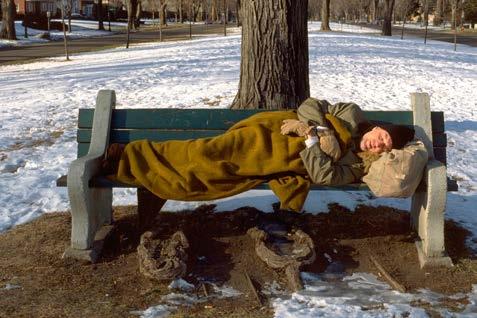

The early shift greets me not with the silence that often arrives with my usual morning, but with the sounds of the awake. The whispered muttering inside the room meant that he was safe and warm. He is alive.
Years ago however, in a hidden away park bathroom, the day was cold and the notion of safety did not surround the girl. On this day she had created a narrative of a slow escape into freedom. One including methamphetamine and frigid temperatures, the escape was interrupted with a hand reaching in to save the girl.
There will be no dying on this day. And the escape from the torments of the mind will have to come another way. Winter with the homeless; and the snow falls on all of us the same.
Day 1 at the Emergency Warming Shelter is always busy, and on January 5th it was no different for us. As the volunteers came, so came the people in from the neighborhoods to escape the frozen streets of Bartlesville.
The familiar faces were greeted with love, and the new faces, some from as far away as Oklahoma City, felt that same love as they unloaded their belongings into our entryway. It’s a sobering thought, that the life in front of you has been reduced to what could now fit inside a shopping cart or wagon.
The happiness of seeing our neighbors that stayed with us last year, was not without a sense of sadness. Sure, they’re warm, safe, and sitting down to hot biscuits and sausage gravy. But as I walked down the hall to retrieve a dry pair of socks for the familiar feet, my mind was met with the sobering thought that many are in the exact same place as last year. And that’s sad to me.
The meeting was brief, and not much of a meeting really, but a talk. The boy was fidgety and continued to pick at the same spot on his fingernail. I watched his face as he watched whatever was happening in his mind. As his eyes darted back and forth, he began to pull at the neck of his hoodie, as if some unseen predator was pulling it from behind; choking him.
“This is tight,” he pulls some more. “I’m kind of anxious, the walls are smaller. Last night was dark in here. Were you here? It was dark. I think the others are talking about me, about my
hoodie. Can I exchange it?”
“We already exchanged it.” I pointed, “That one is clean, it’s yours now.”
“It was actually dark last night.” He continued to gaze outside, his eyes darting back and forth.
The nighttime and the darkness are not always the same, as the darkness of addiction can grip you anytime at all. Five days sober by now, and he continued to pull at the neck of his hoodie.
And this fidgety boy, a young man really, sat in front of me completely unfocused and ready to bolt out into the frozen day. I continued to offer the young man housing options, but in my heart I knew he was fading fast.
His mind had already left the conversation.
“Are you clear on what’s going to take place when we close? We want you to be sleeping somewhere other than the ground behind the laundromat. These are safe places, new beginnings so that you can start over.”
Flashback to exactly one year ago next month, and another young man had escaped that same, exact laundromat. Same age, same dirty blond hair, same small stature, same being far too young to be in this predicament.
This memory, a snapshot image preserved in time, rises to the top of my thoughts. This young man is now housed, working, and continues to stay clean and sober. I won’t mention his name, but if he’s reading this, he’ll know it was him.
But there’ll be no escaping the laundromat today.
We retrieved the young man’s belongings and the volunteer at the front desk asked him if we could pray for him. He very nervously said yes, and stopped pulling at his hoodie for a brief moment of prayer. I put my hand on his shoulder, and I felt him lean into the touch.
The prayer is now over - and the young man walks out of B the Light to greet the frigid streets.
He is my son’s exact age.
And the snow falls on all of us the same...
In retrospect, when our unhoused neighbors come to stay, we don’t really know what’s needed in full detail. They bring their box of puzzle pieces, turn it upside down, and then we help to put all the pieces back together again.
There are many different ways to tell the same story, even when all of the stories end the same. And although they don’t always have the same once upon a time beginning, while offering shelter from the storm, we try to help our homeless neighbors change their ending.
You see, the snow falls on all of us the same, but to the homeless, it’s always colder somehow.




Join us, February 4, for our High School Open House. We are excited to show you the ins and outs of our programs and give you a behind-the-scenes look at Tri County Tech! All high school programs will have sessions. Session times: 4:30pm, 5:00pm, 5:30pm, and 6:00pm.
We will score your application to attend Tri County Tech using a point system and every point counts! Attending our Open House can earn you up to two bonus points.
Our programs are FREE to high school students in Nowata, Washington, and Osage counties, where you can earn one or more certifications that will have you career or college-ready!
Text OPEN HOUSE to 833.661.0512 for a reminder, or visit TriCountyTech.edu/ highschool/openhouse
Join us in June for our annual STEAM Summer Camp - a week of fun career exploration for kids currently in grades 3–9. Campers can explore exciting daily themes of their choice! The camp runs from 8:30am – 3:30pm and includes lunch, snacks, and a t-shirt. Registration opens soon! Sign up before April 1 and get $50 off! Follow us on Facebook and visit TriCountyTech.edu/summercamp for more details.
Explore our FREE training sessions on essential topics or take the next step with one of our CPR courses. Looking for something specific? We also offer customized training tailored to your unique needs! We pride ourselves on providing the training you need for your professional career and business!
Stay up-to-date on our current training courses by texting TRAINING to 833.661.0512
Contact us at 918.333.3255 or email Training@TriCountyTech.edu to learn more.
DITCH THE DEBT! SHARPEN A SKILL!
Tri County Tech offers affordable adult programs to get you into a higher-paying career fast! With our flexible evening programs, you can get certified in under a year! In-house financial assistance is available, and 90% of students qualify.
Looking to gain a skill and head to college? Choose from courses in healthcare, computer, trade skills, and more! Classes start soon!
Have questions?
Contact us at 918.331.3333 or EnrichingLives@TriCountyTech.edu
FEBRUARY IS CAREER AND TECHNICAL EDUCATION MONTH IN OKLAHOMA!
This month celebrates CTE programs that prepare students for high-demand careers with hands-on skills, driving workforce development and economic growth in Oklahoma.
To celebrate, let’s look at some statistics that show how Oklahoma CTE is building futures and strengthening communities:
• Oklahoma CareerTech’s economic impact is nearly $1B statewide.
• Every $1 to technology centers yielded $9.39 in economic output for the state.
• Oklahoma CareerTech has a 94% student positive placement rate.
• There were more than 520,000 enrollments for the 2024 fiscal year across the Oklahoma CareerTech system.
• More than 44% of Oklahoma students in grades 9-12 were enrolled in at least one CareerTech class in FY24.
• Since 2020, there has been a 40% increase in demand for full-time CareerTech programs
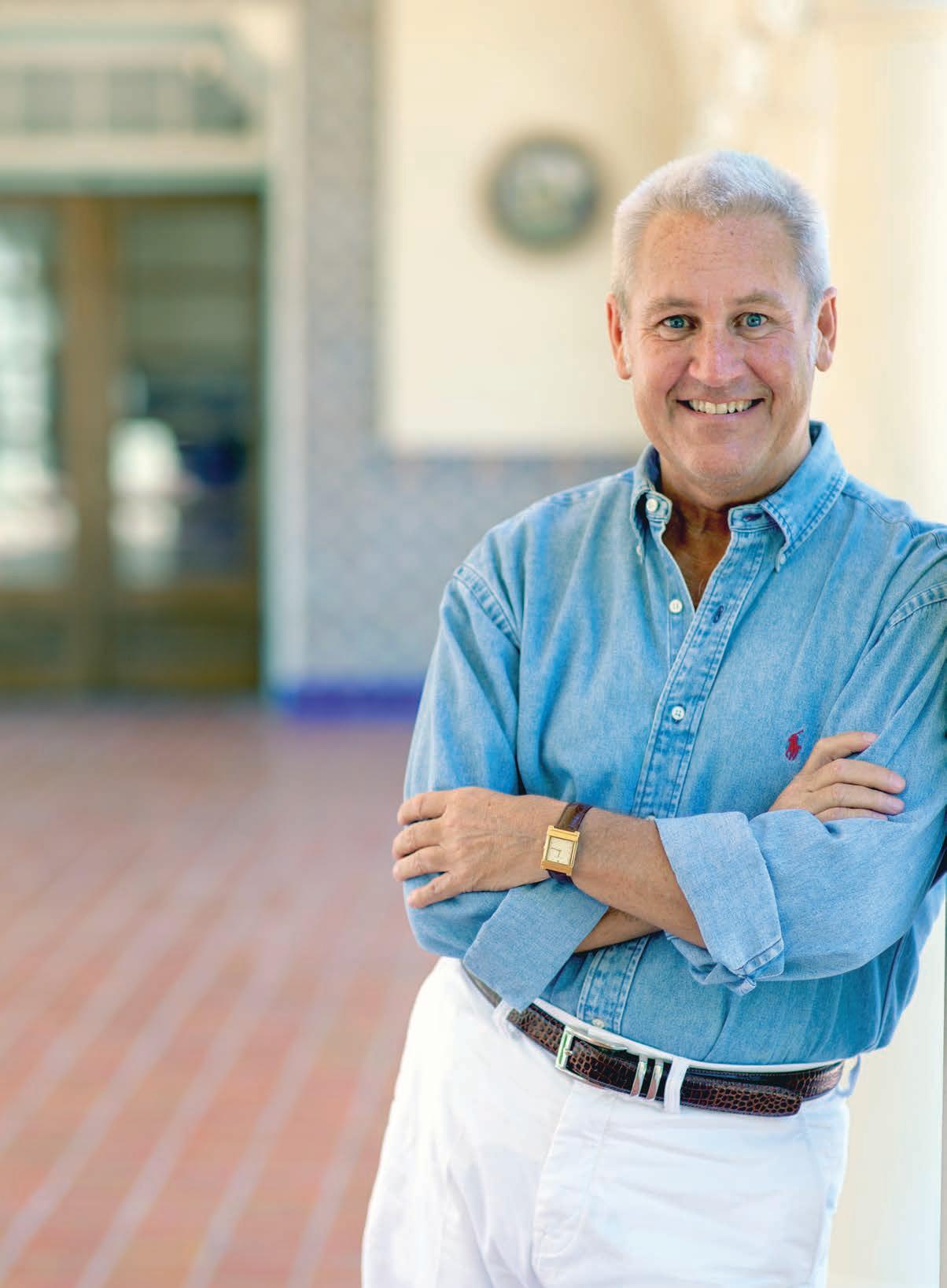


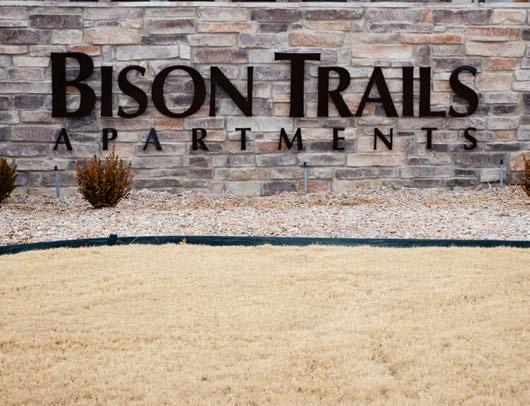
by Abigail Singrey
For the uninsured or underinsured in Bartlesville, Family Healthcare Clinic has been providing a lifeline for almost 25 years. For a $40 payment, community members without insurance can access primary care services, including treatment for colds, flu, respiratory issues, ear and sinus infections, minor injuries, and more. The clinic also provides support for cancer screenings, reproductive health, low-cost lab tests, and other essential services.
With 11 percent of Oklahomans uninsured, according to the Oklahoma Department of Health, many Bartlesville-area residents face significant barriers to basic medical care. FHC’s affordable services are a crucial resource for those in need.
Janice Shippy, DPR, APRN, who officially became executive director on April 1, 2024, has been looking for additional ways that FHC can meet community needs. She recognized a lack of healthcare providers accepting Medicaid and Medicare, especially as many area clinics have discontinued those services. Despite facing three application denials, Shippy was eventually connected with the right representative. With guidance on a few minor adjustments, the application was approved just five days later, in July 2024. Now officially a Medicare and Medicaid provider, FHC is poised to expand its reach, offering essential medical services to more people in need.
“(Getting approved) was the best feeling in the world,” Shippy said.
The FHC team has grown in recent years with some fantastic additions. Shippy has 26 years of experience as a nurse practitioner, while Jennifer Conant, APRN, has 27 years of experience. Nicole Brewer, LPN, also brings her expertise to patient care. Lora O’Dell joined as the front office manager, while Candy Kirchner oversees operations as the office manager and human resources lead. Rounding out the team is Brittaney GentryWood, who directs the Teen Pregnancy Prevention program, adding an essential focus on community education and support.
“We have a wonderful staff of six women here, and we work well together,” Shippy said. “Our team really gels.”
One of Family Healthcare Clinic’s standout programs is

its mammogram initiative for those in need. With one in eight women diagnosed with breast cancer during their lifetime, according to the American Cancer Society, early detection through regular mammograms is critical. However, the cost can be prohibitive for those without insurance. To bridge this gap, Family Healthcare Clinic offers breast exams for just $40 and provides vouchers for free mammograms, ensuring more women have access to life-saving screenings.
“This program has helped numerous women detect their cancer and start treatment,” Shippy said. “This saves lives.”
In addition, FHC offers a Teen Pregnancy Prevention program in Nowata Public School District, with plans to expand to additional school districts in the future. The abstinencebased program helps provide middle schoolers with information to make good, healthy decisions for their future.
“There are a lot of myths about sex and sexual health and a lot of silly rumors that go around with groups that age,” said Gentry-Wood. “ . . . . We also discuss a lot of things that young teens go through, like determining how to set boundaries and values for themselves, and healthy relationships.”
Unfortunately, statistics show that one in 10 teens will face violence in a dating relationship. In addition, the prevalence of cell phones and social media has increased the issues that teens face, as well as the peer pressure around those issues.
“I tell the teens, you have to think of how this decision will affect me now and in the future, even though it’s really hard to see that future sometimes,” Gentry-Wood said.
The staff at Family Healthcare Clinic are dedicated to empowering the local community to prioritize their health. Each month, Shippy leads informative lunch-hour talks at the Bartlesville Public Library, covering important health topics like diabetes management, heart health, cancer prevention, and more. These sessions are open to the public, offering valuable insights and practical tips.
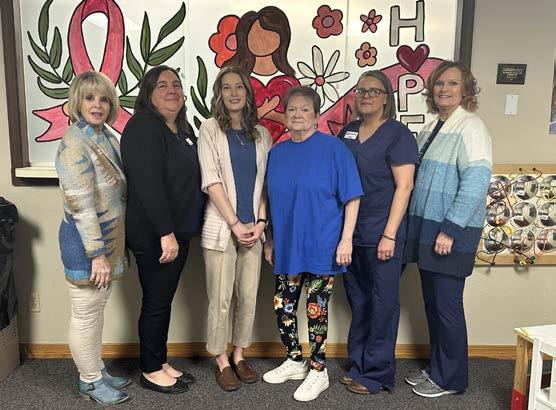
To see upcoming events, visit the library’s calendar at bartlesvillelibrary.com.
Family Healthcare Clinic is a Bartlesville Regional United Way partner agency. Find out more about Family Healthcare Clinic at familyhealthcareclinic.org.
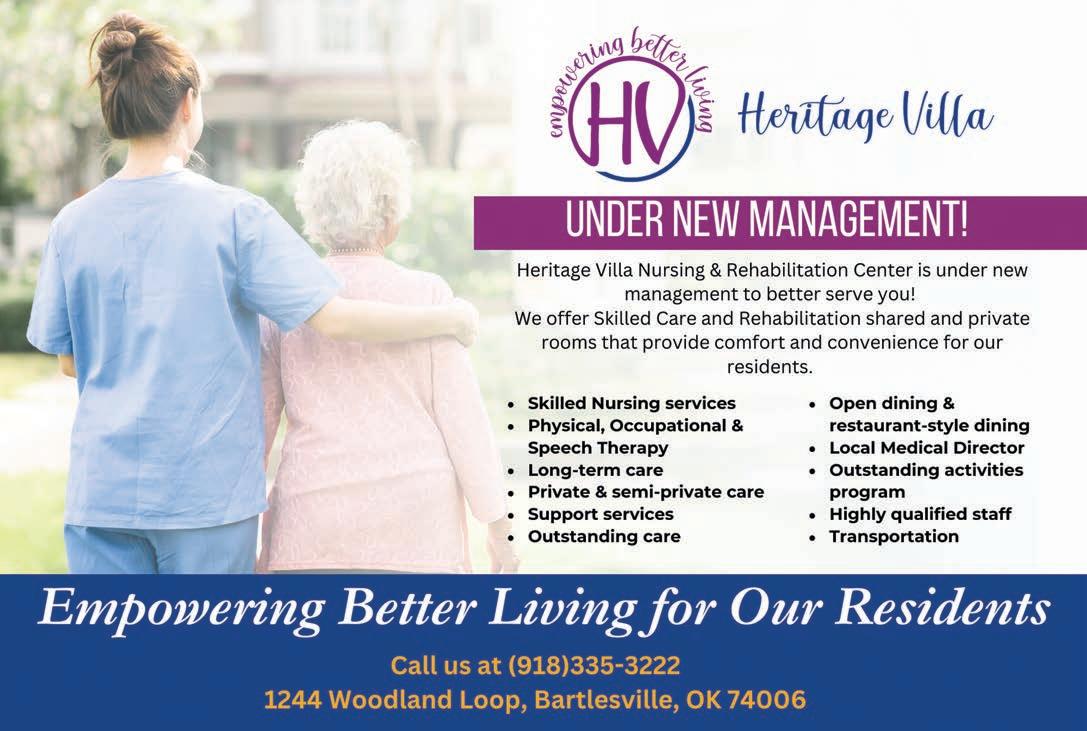



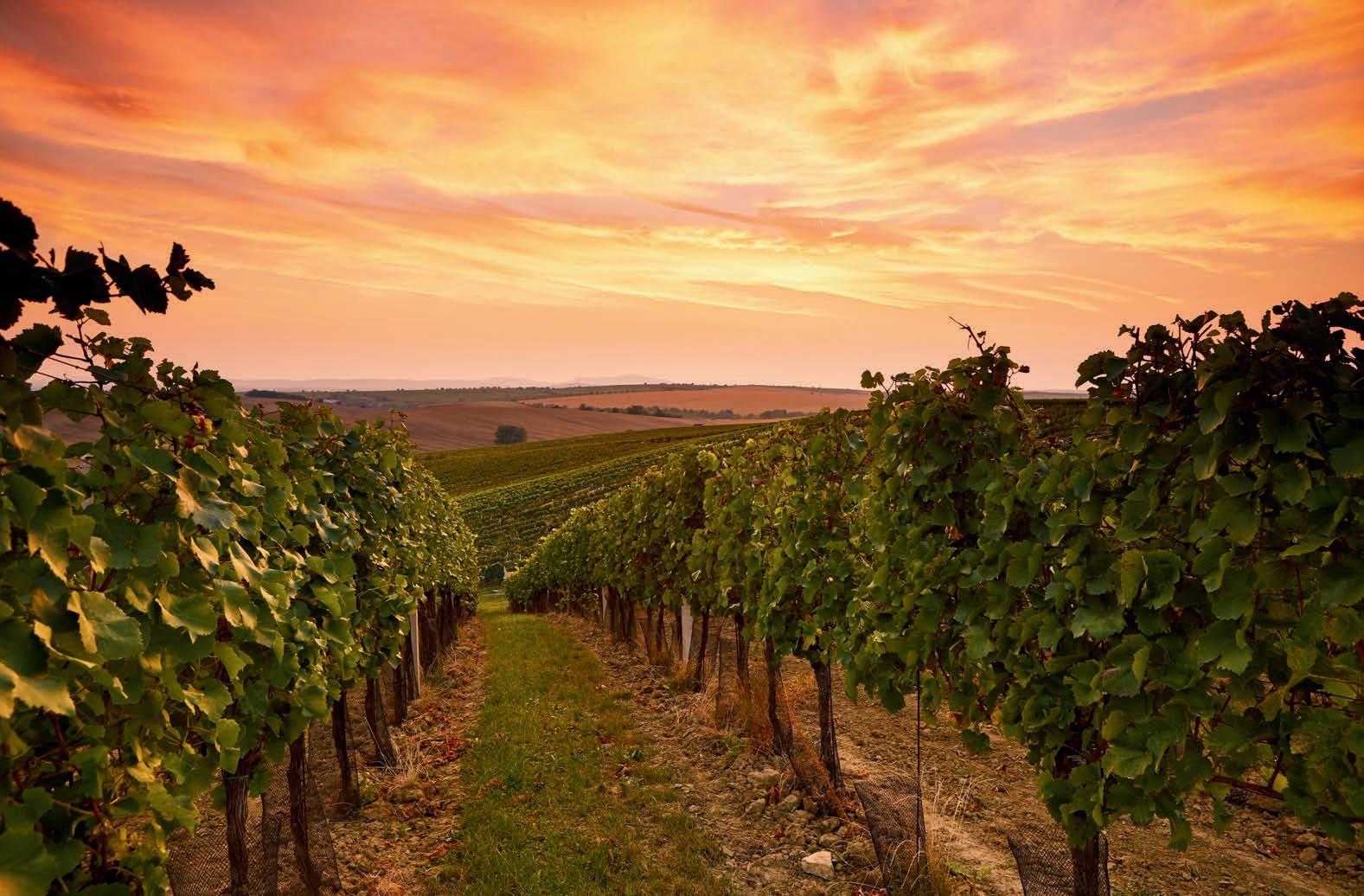

by Brent Taylor
The remains of my Father-in-law were scattered to the four winds from atop Bowman’s Hill Tower on the Pennsylvania side of the Delaware River. Thomas Mason’s children loved this family getaway place near the spot where George Washington crossed over to Trenton, New Jersey on Christmas night in 1776.
George Washington became our first President and Thomas Mason became the foreman of a concrete block plant. They walked the same ground near the Delaware River separated by 200 years and starkly contrasting social and political worlds. But they were in their own place and time, men who helped shape the people and moments that they encountered with humility and decency.


When President Jimmy Carter passed recently, I thought of this intersection of presidential power with humility and service. It is fitting that James Earl Carter, Jr. chose to run for public office as Jimmy Carter. He had always been called Jimmy and thought it natural.
When the people who have helped shape our world for good pass, be they famous or not, the sun still rises and sets. But we change into our best clothes and we honor their legacy like JohnJohn Kennedy standing at attention saluting his father passing in a casket pulled by a horse-drawn caisson.
John John
Alice Evans writes about honoring the life of another President. The train bearing the body of President Eisenhower was to pass near the family home in Missouri. The train departed Washington, D.C. for his burial in Abilene, Kansas. It passed through seven states and covered 1,389 miles in 35 hours.
Eisenhower Funeral Train
On March 31, 1969, her father, a Korean War veteran, a farmer, and a student of American history, donned his Sunday suit and took his family to view the funeral train of Dwight D. Eisenhower.
“Around me, I could sense palpable anticipation. Within a minute, a long train came into view. My father stood at full
attention in a military salute, something I had never seen. Tears streamed down his face. I had not seen that before. Inside the brightly lit final car we saw, or thought we saw, Mrs. Eisenhower dressed in black sitting at a table. The moment passed by as though in a blur and was over. Dad was no longer saluting, but he was still crying.” An Ordinary Citizen Honors A Man of Extraordinary Decency
Alice Evans January 7, 2025 Front Porch Republic
Like John John saluting his father and a Korean war veteran saluting President Eisenhower, Mark Moore has saluted President Jimmy Carter, a peanut farmer from Plains, Georgia, with poignant words. Moore is using peanuts to feed millions of malnourished children around the world. He is one of the founders of an organization called Mana. They honor the legacy of a man born into slavery, George Washington Carver, who overcame severe malnutrition and hardship to become one of the most visionary agricultural scientists in history. Known as “the plant doctor,” his groundbreaking work with peanuts helped revive the soil of the American South and empowered Black farmers during Reconstruction. You can read about Mark Moore and Mana here. https://mananutrition.org/who-we-are/
“When a reporter shouted to Ms Lillian Carter on Inauguration Day in 1977 “Ms Lillian, are you proud of your son?” She retorted, “ Which one?” Her boy Jimmy had a decent resume that has since grown more impressive. Top of his class at the Naval Academy, Nuclear Engineer, entered a melting Canadian Nuclear reactor in his 20’s to stop it from catastrophe, state senator, governor of Georgia, president of the United States. Later he would imagine and organize the Camp David Accords, teach thousands of Bible classes, win a Nobel Prize, a Pulitzer Prize, the Presidential Medal of Freedom, Eradicate Guinea Worm, launch the Carter Center and put Habitat for Humanity on the map. Not too bad for a lowly peanut farmer. I’m always shocked to have so many of my friends who don’t 100% agree with everything he ever stood for dismiss and belittle him when 1000 of his accomplishments, awards and accolades that will not make his obituary would be the top achievement of many of our lives.”
- Mark Moore



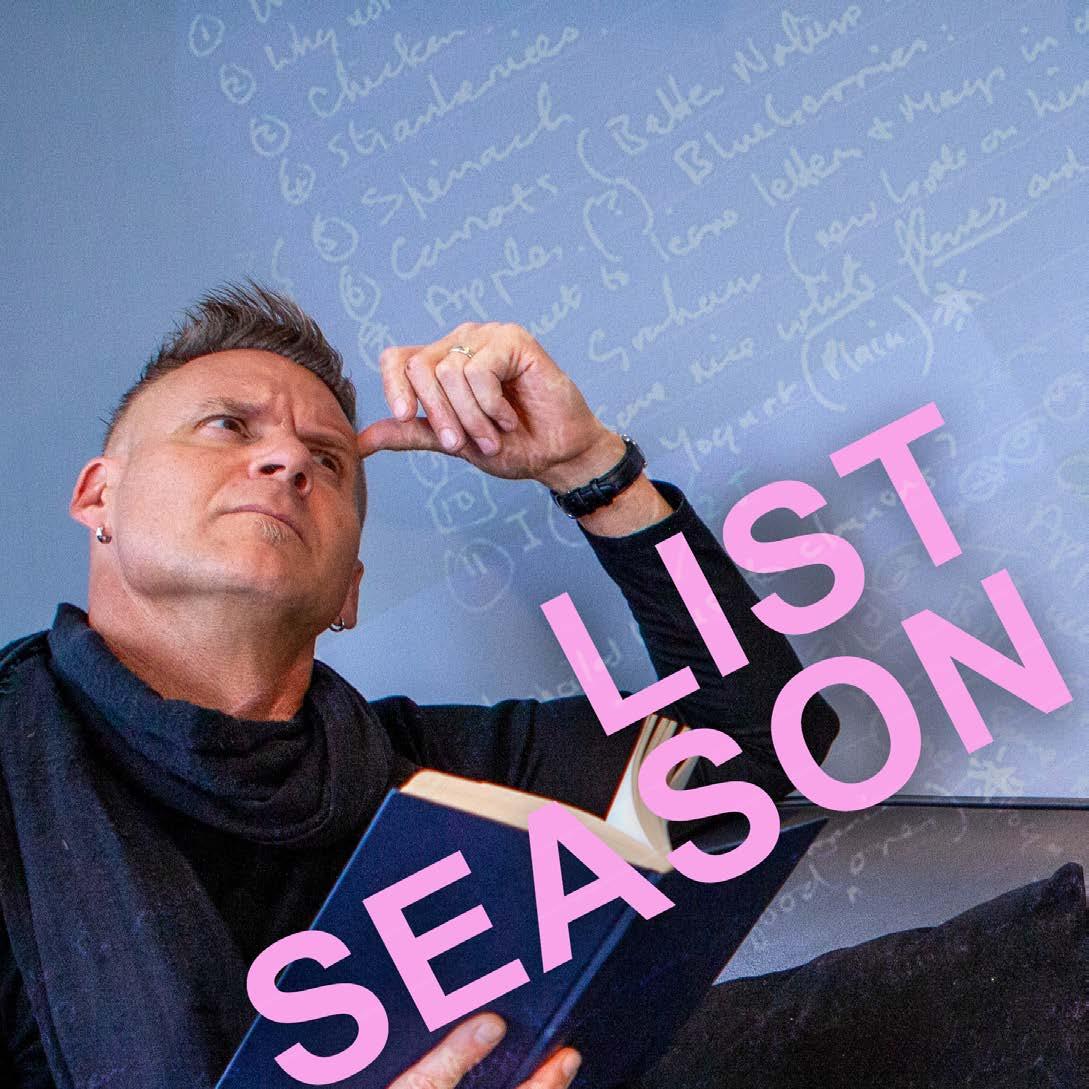
by Jay Webster
My friends, you are in the prime list season. It’s like awards season, only less sparkly and with fewer speeches (but not by many).
My guess is you might not have even been aware there is a list season, but here we are.
This is the time of year in which we list all the best and worst of the year that just passed. Top ten songs. Top five worst movies. We even list the movies and shows we haven’t seen yet that we are looking forward to. We list New Year’s resolutions… Most used words. Most things searched online. Greatest fears of the New Year. The most anticipated… whatevers… In fact, I, myself, just invited you last month to
make a High-Five/Low-Five list of your holiday experience.
Lists can be very helpful. They declutter the mind, organize our thoughts, help us remember all that’s important to remember, and sometimes act as prioritized “to-do” lists that significantly increase our chances of success and/or sanity.
Over the last several years, I’ve dedicated one column to my own list. It’s a list of things I find myself exceptionally grateful for in a given year. It’s not a complete list or really even weighted by importance or necessity. It’s just things that, at this particular moment, significantly add to the quality or enjoyment of life, and so they rise to the top of my awareness. Your list would likely be very different. But then
you’re not writing a column for tens of tens of dedicated fans to read.
So, here are a few of the things on my list.
(Annual Disclaimer: Obviously at the top of my list are God, Family and ‘Merica. But for the purposes of this column, let’s believe these truths to be self-evident and list a few of the other gratitudes in no specific order.)
GROWTH: We’ve all had those people in our lives who utter some statement to the effect of: I’m sorry, but that’s just who I am. Or I just have a short fuse, that’s just me. Or I’m too old to change, take me or leave me. I don’t buy it.
Yes, change is often difficult. Sometimes - very difficult. Getting sober. Managing anger. Healing from past pains. Changing learned behavior like learning it’s OK to not be the hero or establishing boundaries or adopting the work No… All of these take commitment and sometimes the help of other humans. But just the mere idea that I don’t have to be this version of me forever gives me hope.
I used to consider myself an introvert. I still do in some regard, but I also allowed myself to use that as a wall or excuse to live for myself and not consider the needs of others. That was a lonely place. That’s changed. (More on that in a minute.)
Hope, anticipation, want…these are the things that help make us feel alive. The idea of staying put and punishing those around me is soul-sucking. None of us knows how many days we have left, one or one thousand or one more than we anticipated. Whatever the number we get to choose now how we live it. I’m so grateful for that.
HEALTH: I’m getting older. Maybe you are, too. I don’t go more than two or three weeks (certainly not a month) without some doctor visit for something. And yet I am above average health-wise.
Are there some things I would like to be better? Absolutely. Given the chance, would I go back and get my body and health from when I was 30-something now that I really know how to use it properly? I wouldn’t hesitate for a minute.
But the reality is that so many of you are dealing with real health issues and pain scenarios and chronic problems… and you do it with such grace. Most of the people in your life would never even know all that’s on your plate from day to day. I’m so proud of you and humbled by your stamina and inner strength. You amaze me. As my father-in-law would say, “I hate pain, especially on me.” And so your challenges and the poise with which you face them make me all the more grateful for the health I’ve enjoyed throughout my whole life. Cheers to you.
TRIBE: A few weeks ago, we talked about the concept of Tribe (groups linked by social, economic, religious, or blood ties, with a common culture and dialect. In short, our people.)
I mentioned earlier that when I was a younger man, I had a propensity toward aloneness. But a funny thing happened on the way to the rest of my life, I discovered I actually really like people. In fact (in measured doses), they make me feel good and hopeful and a little less crazy. I also discovered I can offer those same services to the other humans. I can make people feel loved and encouraged and better about life in general. And, when we do these things together, suddenly we have this thing that looks like community. We are better together. And so, as the lyric says: “People who need people are the luckiest people in the world.”
I’m so grateful to need and be needed. I love the people who are in my life, even those who don’t agree with mewhich is most of them. And even though we are not physically together at this moment, I love the community that has formed around these columns and discussions. We do a podcast (the dreamerslive podcast), and it’s a very similar dynamic. We’re apart but together.
So, that’s part of my list for this year. It doesn’t include my top shows and music and books and family and friends, but it’s a good partial list just the same. What’s on your list? If you stopped right now and eliminated the obvious stuff, what are the things you are really, really enjoying right now? Certain friends. A particular drink or restaurant. A new technology or show. A job or tribe. A new location or return of something familiar. It doesn’t have to be monumental, it just has to be something that adds to your enjoyment of life in this season.
I hope you’ll make a list.
In the meantime, I mean it when I say you are part of my list. Let’s live in such a way as to make it on someone else’s list. You make life better.
Until next month, do good, friends. Cheers.

Sunday, February 23, 2025
7:30 PM
Recommended for ages 10+


DEAR EVAN HANSEN
Thursday, March 6, 2025 7:30 PM
Recommended for ages 13+

A comical feast that embraces the wackiness in every family, the magnificently macabre hit musical THE ADDAMS FAMILY comes to The Center in Bartlesville for one performance on Sunday, February 23 at 7:30pm.
Tickets for THE ADDAMS FAMILY are on sale now and range from $30 to $95. Tickets can be purchased online at bartlesvillecenter.com, by phone at 918-3372787, or by visiting The Center Box Office at 300 SE Adams Boulevard.

Wednesday Addams, the ultimate princess of darkness, has grown up and fallen in love with a sweet, smart young man from a respectable family. A man her parents have never met. And if that weren’t upsetting enough, she confides in her father and begs him not to tell her mother. Now, Gomez Addams must do something he’s never done before - keep a secret from his beloved wife, Morticia. Everything will change for the whole family on the fateful night they host a dinner for Wednesday’s “normal” boyfriend and his parents.
On the heels of Wednesday, the 3rd most-watched show on Netflix of all time, Big League Productions, Inc. presents THE ADDAMS FAMILY, a devilishly delightful musical comedy based on the creepy, kooky characters by legendary cartoonist Charles Addams.
Broadway in Bartlesville! is also proud to present the Tony(r) and Gramm (r) -winning Best Musical, DEAR EVAN HANSEN , at The Center on Thursday, March 6 at 7:30pm. Tickets to this production are also available online, by phone, or in person through The Center box office.
Declared “one of the most remarkable shows in musical theater history” by The Washington Post, DEAR EVAN HANSEN is the first musical to take a groundbreaking look — from the point of view of both the parents and young people — at our complex, interconnected, and social mediafilled lives.
Evan Hansen is a high school student who always feels like he’s on the outside looking in. Evan finally gets what so many of us are searching for—the chance to finally fit in. What follows is a poignant, funny, and

powerful musical about how even though it can be hard, we can find each other—and ourselves— along the way.
Including some of the most iconic musical theatre songs from the last decade, including “You Will Be Found,” “Waving Through A Window,” and “For Forever,” DEAR EVAN HANSEN features an uplifting score by the Emmy®, Tony®, Grammy®, and Oscar® winning team behind The Greatest Showman, La La Land, and “Only Murders in the Building” Benj Pasek and Justin Paul, and a book by Tony Awardwinner Steven Levenson.
Generous donations from The National Endowment for the Arts, the Oklahoma Arts Council, and the following local sponsors make this show and Broadway in Bartlesville! possible: Arvest Wealth Management * bMonthly Magazine * Cortney McClure Design * Mr. and Mrs. Paul Crawford * Examiner-Enterprise * Green Country Village * Keleher Architects * KGGF KUSN KQQR * KRIG KYFM KWON KPGM * Melody’s Creative Cuisine * Nowata Road Liquor * Phillips 66 * Price Tower Arts Center * Robinett|King * Dr. and Mrs. Richard Rutledge * Dr. and Mrs. William D. Smith * Stumpff Funeral Home & Crematory * Ms. Terri Taylor * Truity Credit Union * Visit Bartlesville.

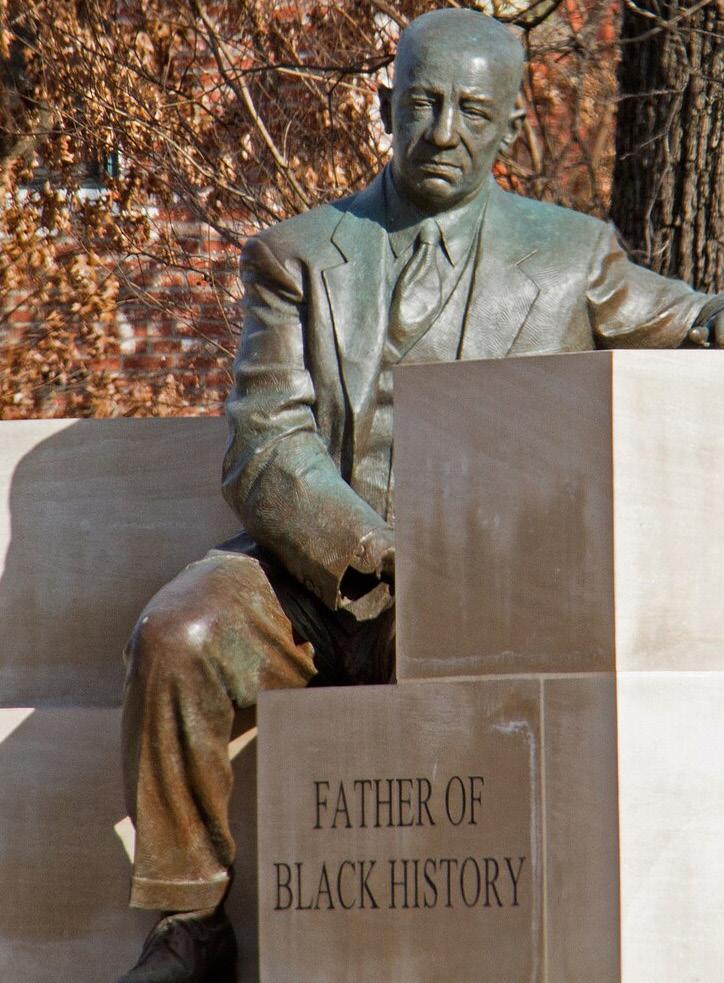
by Jay Hastings
American historian Carter G. Woodson, who pioneered the field of African American studies in the early 20th century, was born in Virginia, the son of former slaves. The Woodson family was extremely poor, but proud. Woodson grew up with his parents recounting the happiest day of their lives as the day they became free.
Woodson had to put off schooling while he worked in the coal mines of West Virginia. He later graduated from Berea College, after which he became a teacher and school administrator.
Earning graduate degrees at the University of Chicago, Woodson became the second African American to obtain a PhD from Harvard. He was the only person whose parents were enslaved in the United States to obtain a PhD.
Woodson was largely excluded from the uniformly-white academic history profession, and he realized the need to build structures to support scholarship in black history and to encourage development of black historians.
After Woodson attended a three-week national celebration of the 50th anniversary of emancipation in 1915, he and minister Jessie E Moorland were so inspired they joined others in founding the Association for the Study of Negro Life and History, to encourage scholars to engage in the study of the historical experiences of black people. The group later sponsored a National Negro History Week in 1926, choosing the second week of February to coincide with the birthdays of Abraham Lincoln and Frederick Douglass. The event inspired schools and communities nationwide to organize local celebrations, establish history clubs, and host performances and lectures.
As early as the 1940s, some communities had transformed February into Negro History Month. February is the birth month of President Abraham Lincoln (born February 12), who issued the Emancipation Proclamation, and African American abolitionist, author, and orator Frederick Douglass (born February 14). Since the deaths of Lincoln and Douglass (in 1865 and 1895, respectively), the Black community celebrated on their birthdays their contributions to African-American liberation and the pursuit of equal civil rights. By rooting Negro History Week in February, Woodson sought to both honor the inestimable legacy of Lincoln and Douglass and to expand an already existent celebration of the history of Black people in America to include not only the accomplishments of these two great individuals but also the history and achievements of Black people in general.
With the rise of the American civil rights movement and
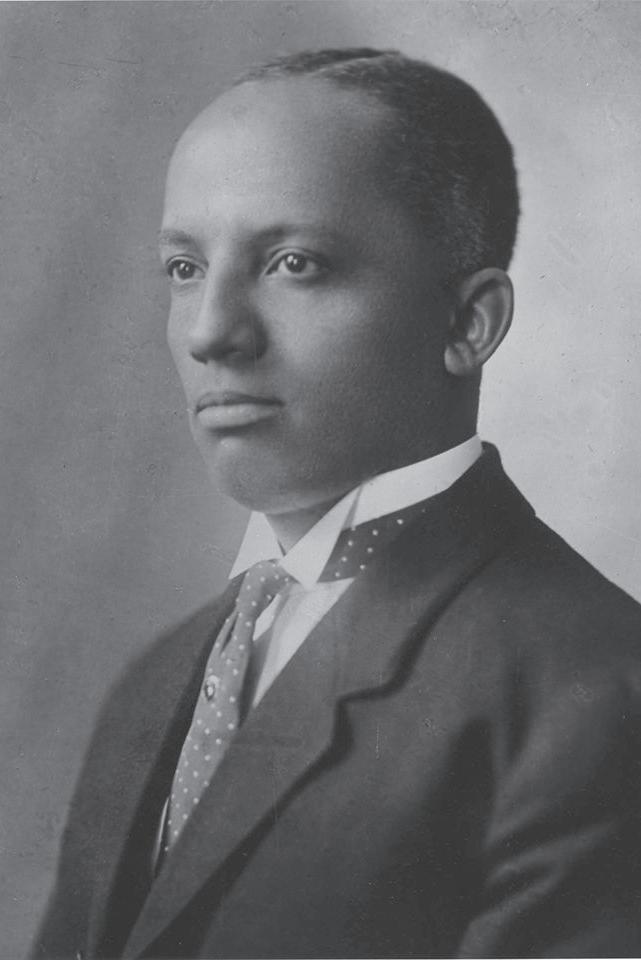
the Black Consciousness of the 1960s, Negro History Week had become Black History Month in more and more places. In 1976, the association Woodson founded, later renamed the Association for the Study of African-American Life and History, facilitated the widespread institutionalization of February as Black History Month, and President Gerald Ford urged Americans to participate in its observance. Since 1976, every U.S. president has officially designated the month of February as Black History Month.
Woodson wrote of Negro History Week, “It is not so much a Negro History Week as it is a History Week. We should emphasize not Negro History, but the Negro in History. What we need is not a history of selected races or nations, but the history of the world void of national bias, race hatred and religious prejudice.”





